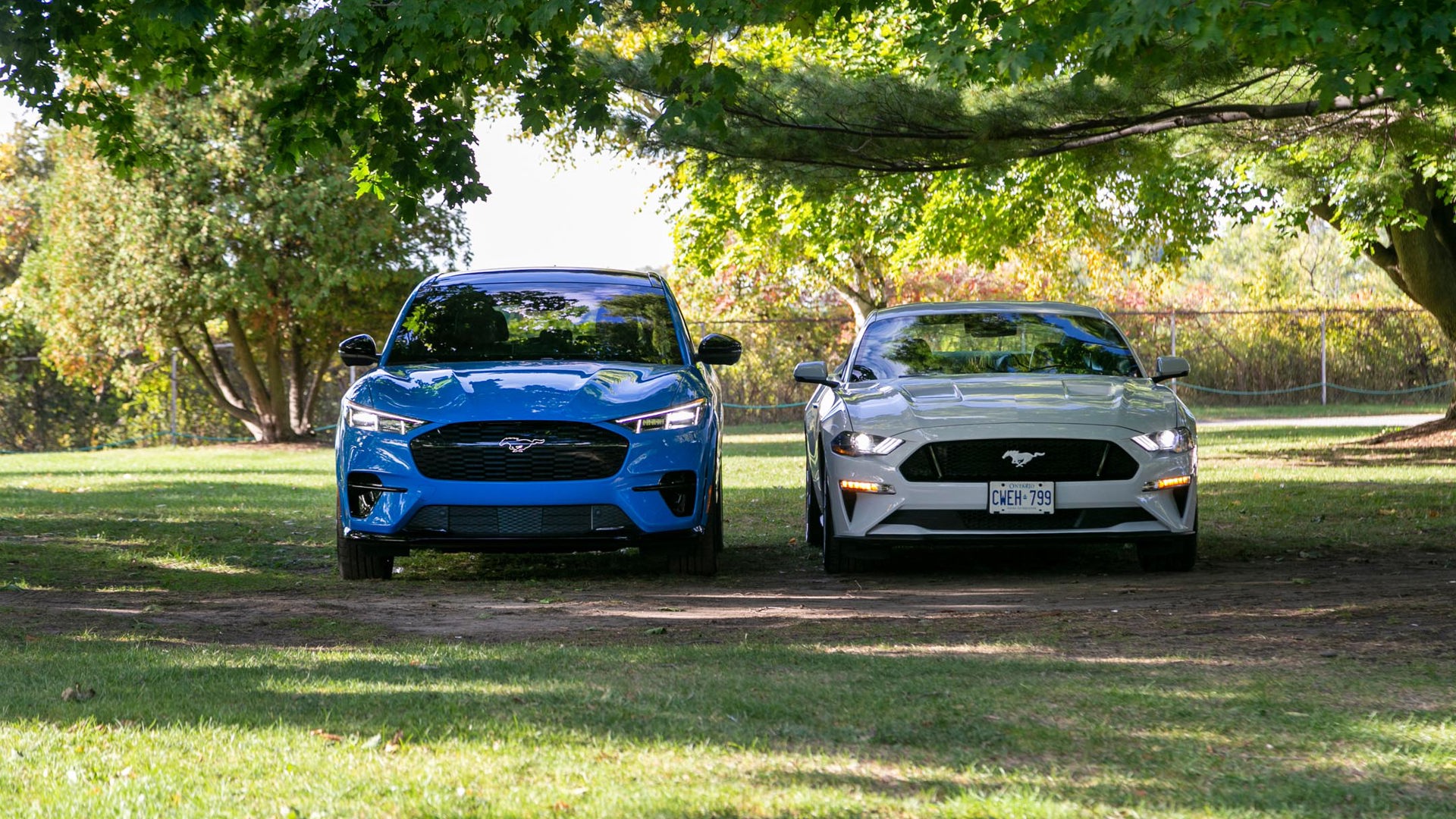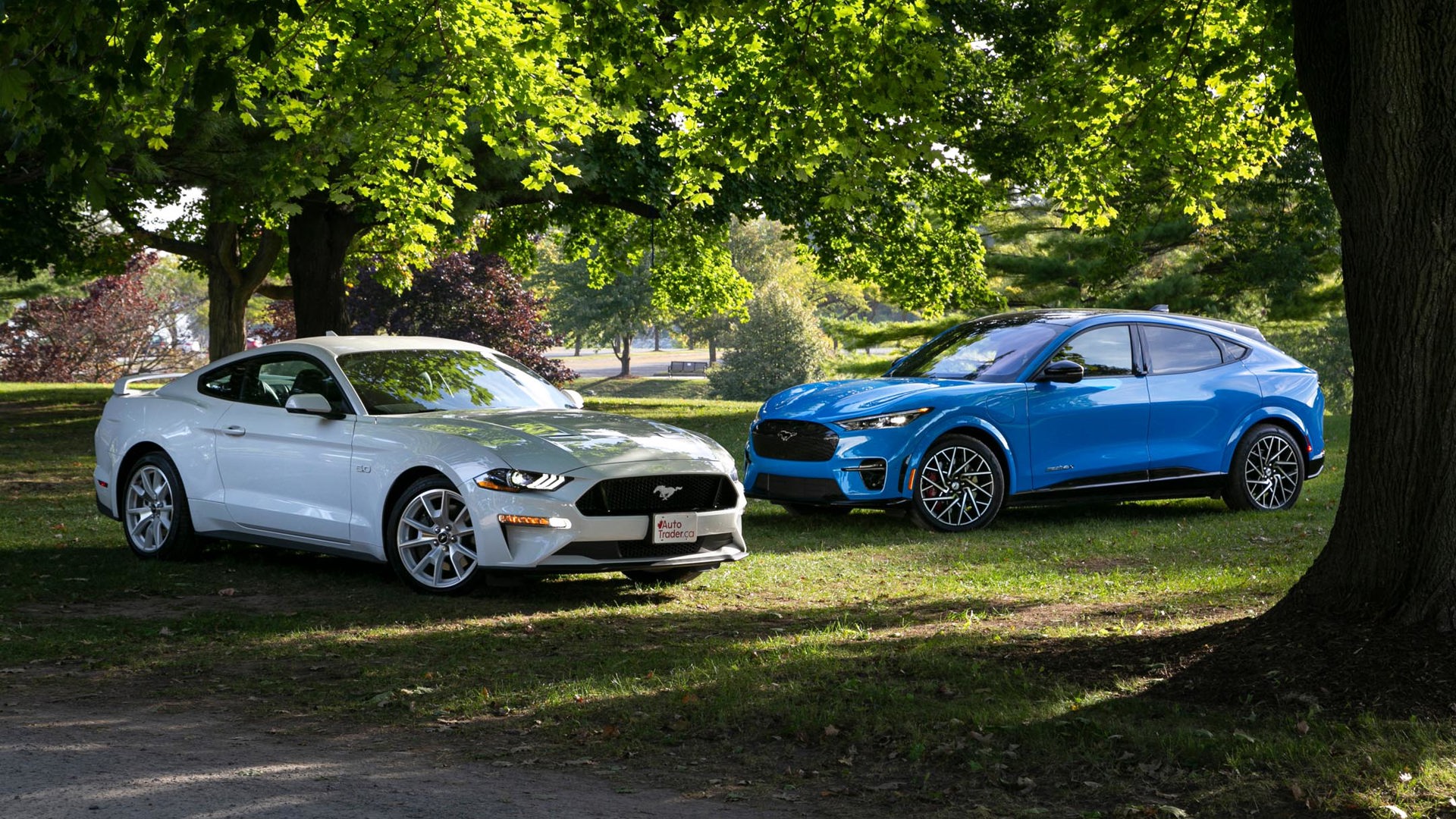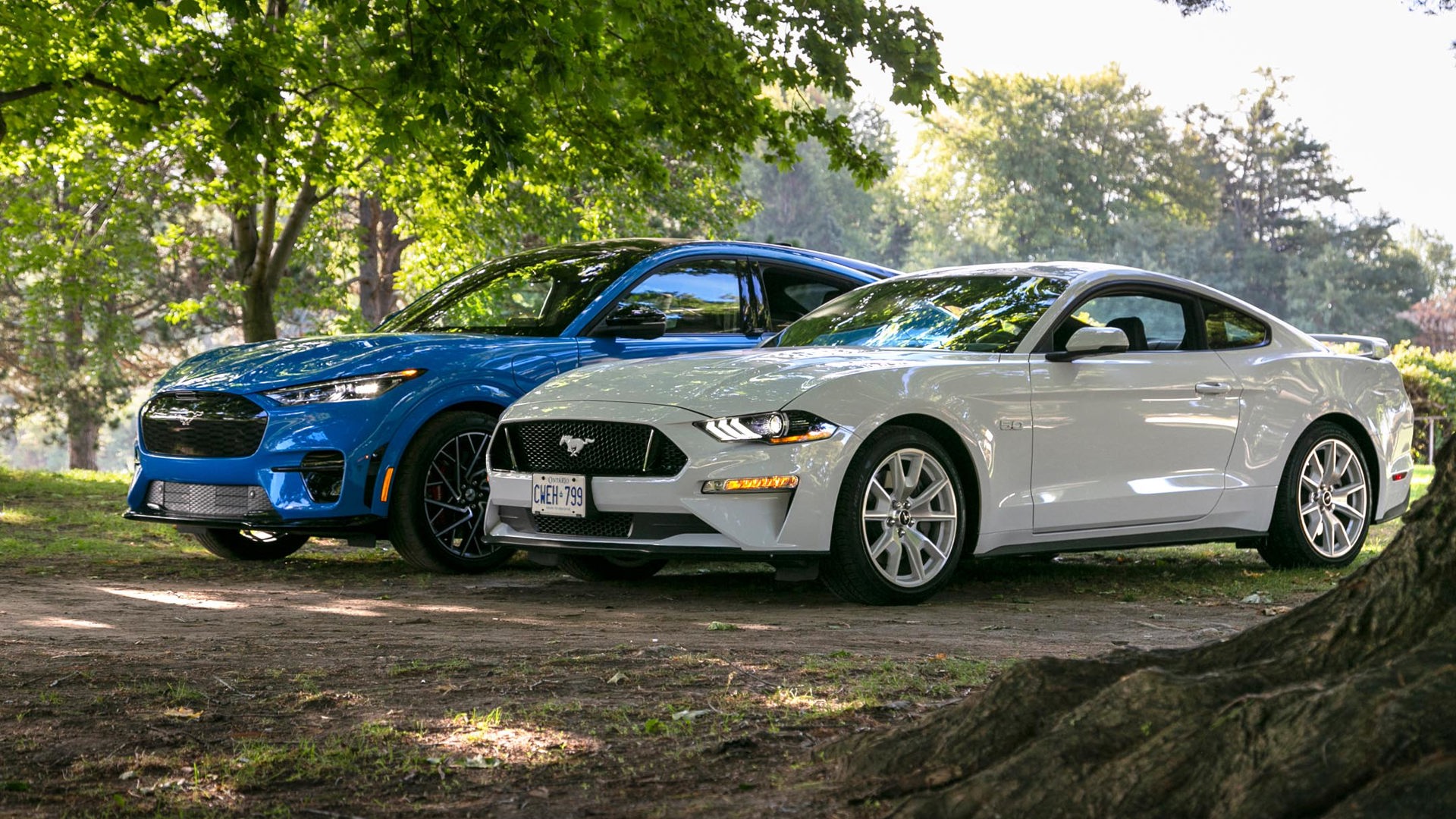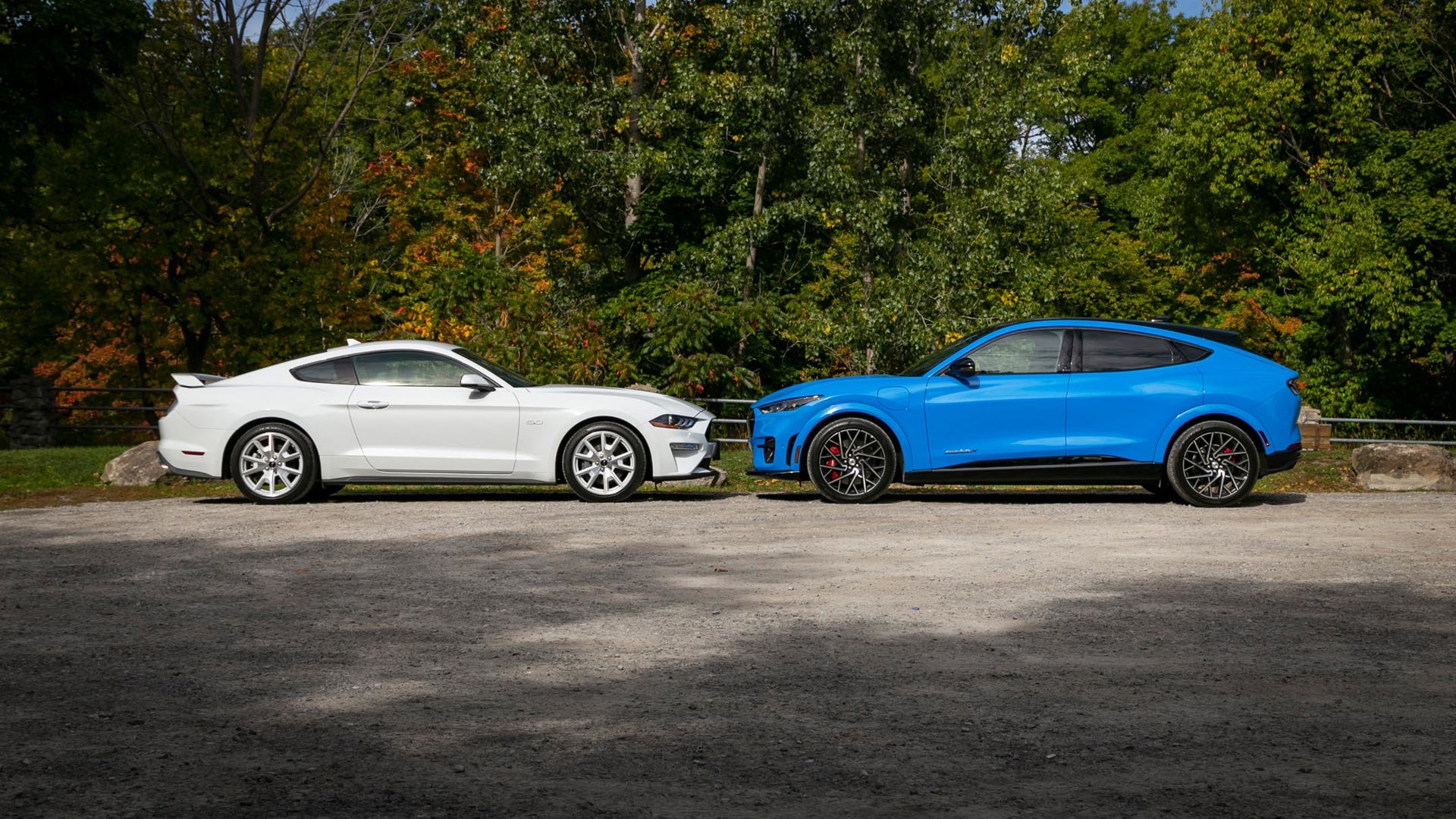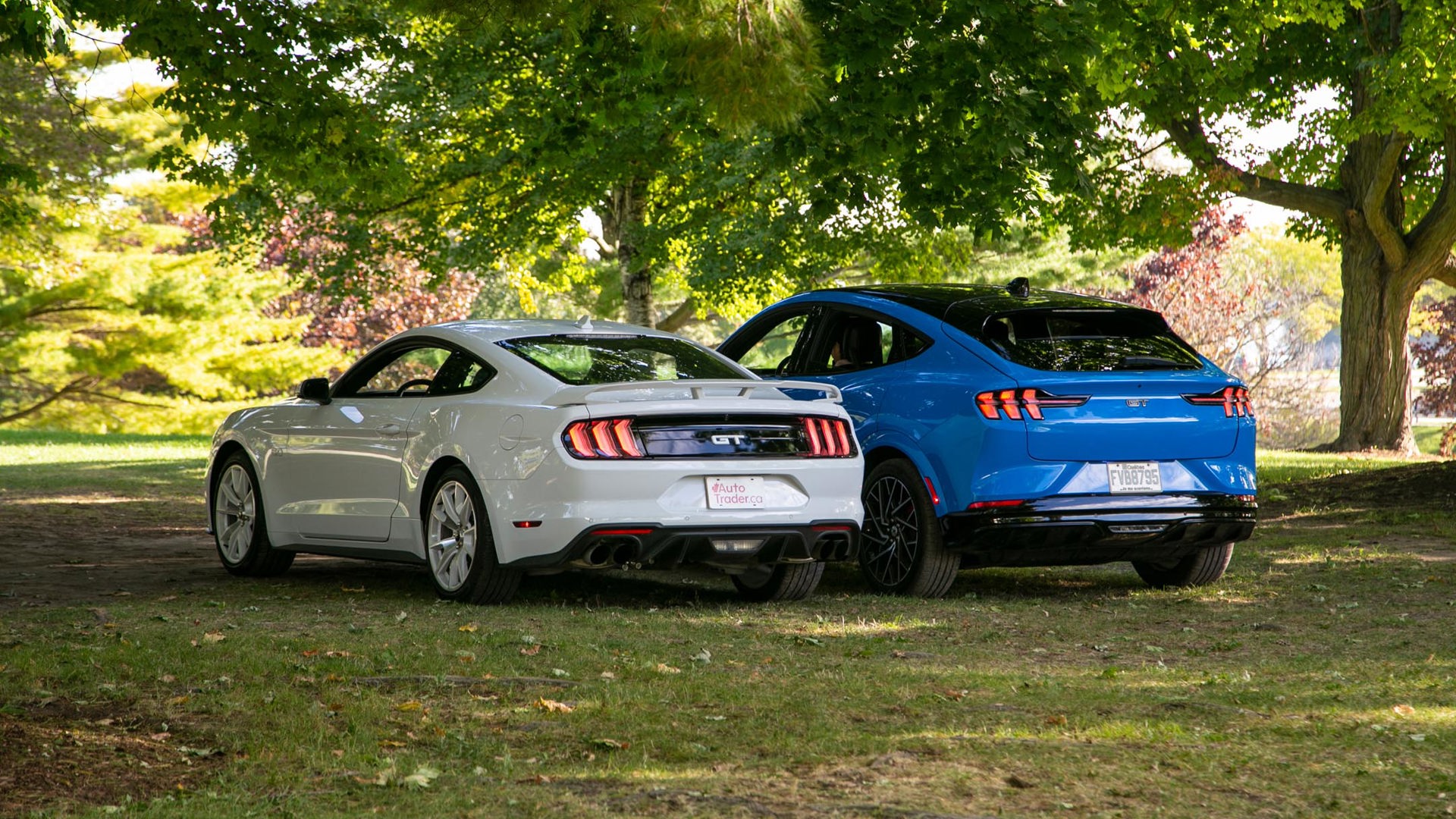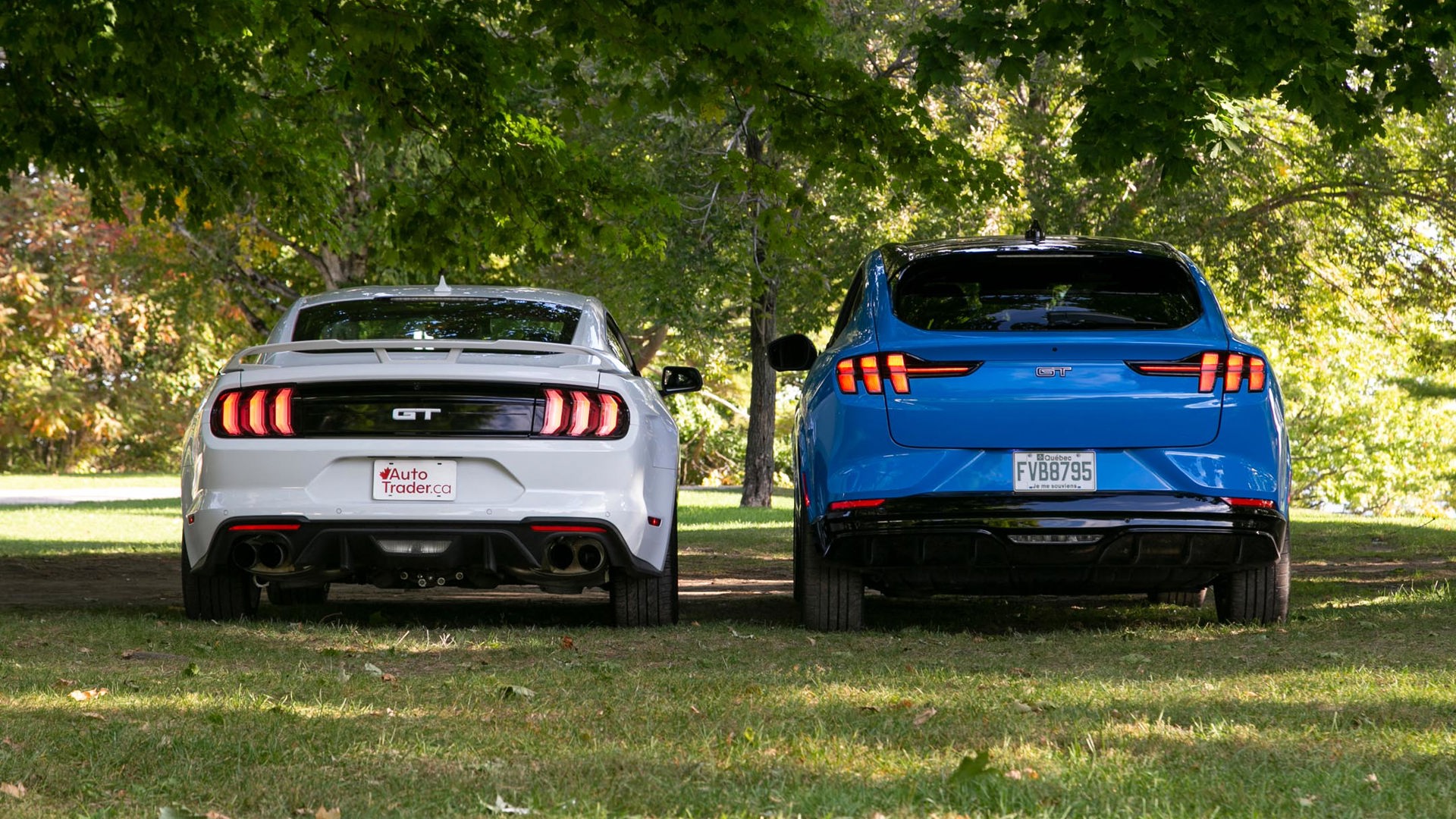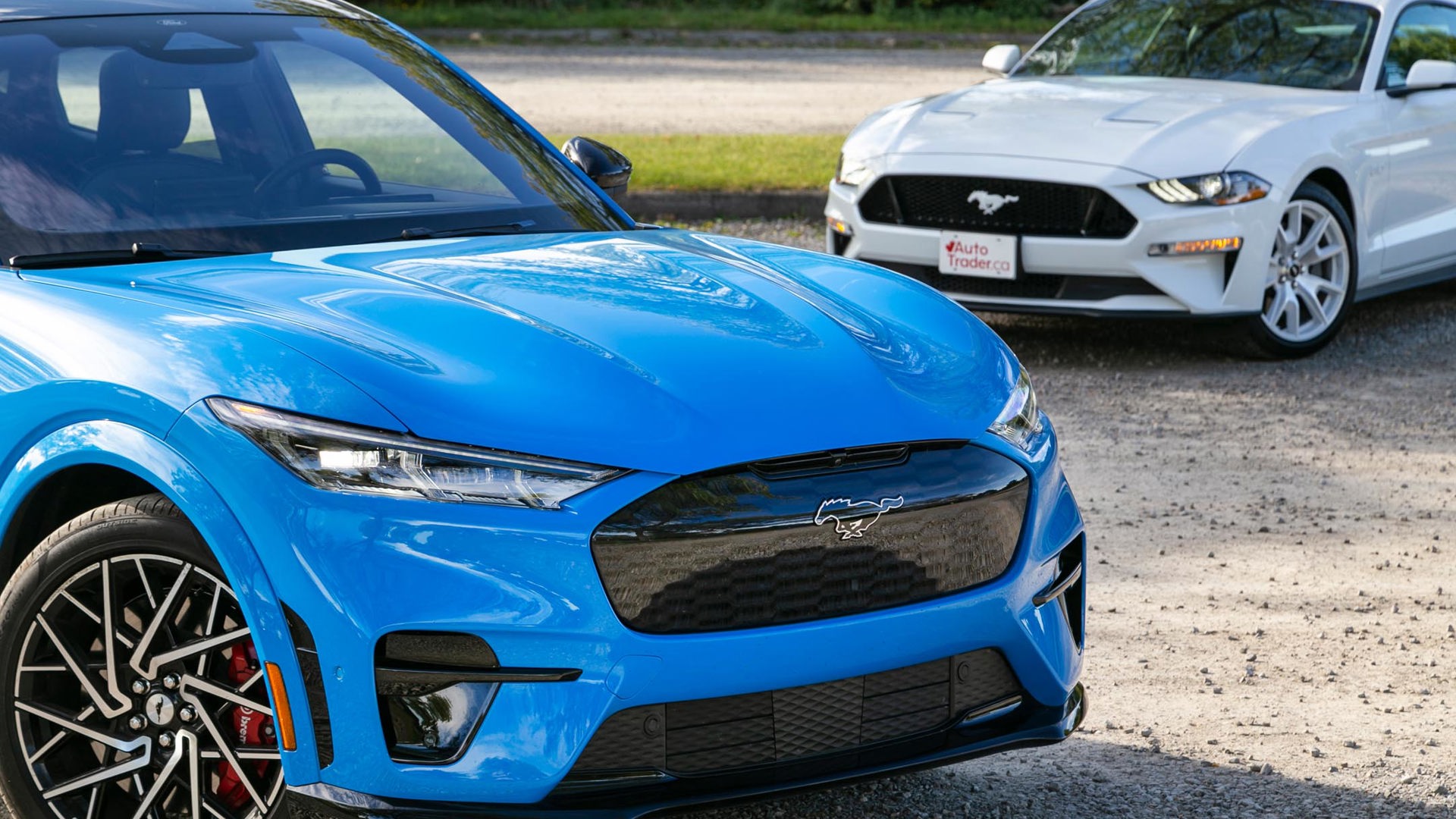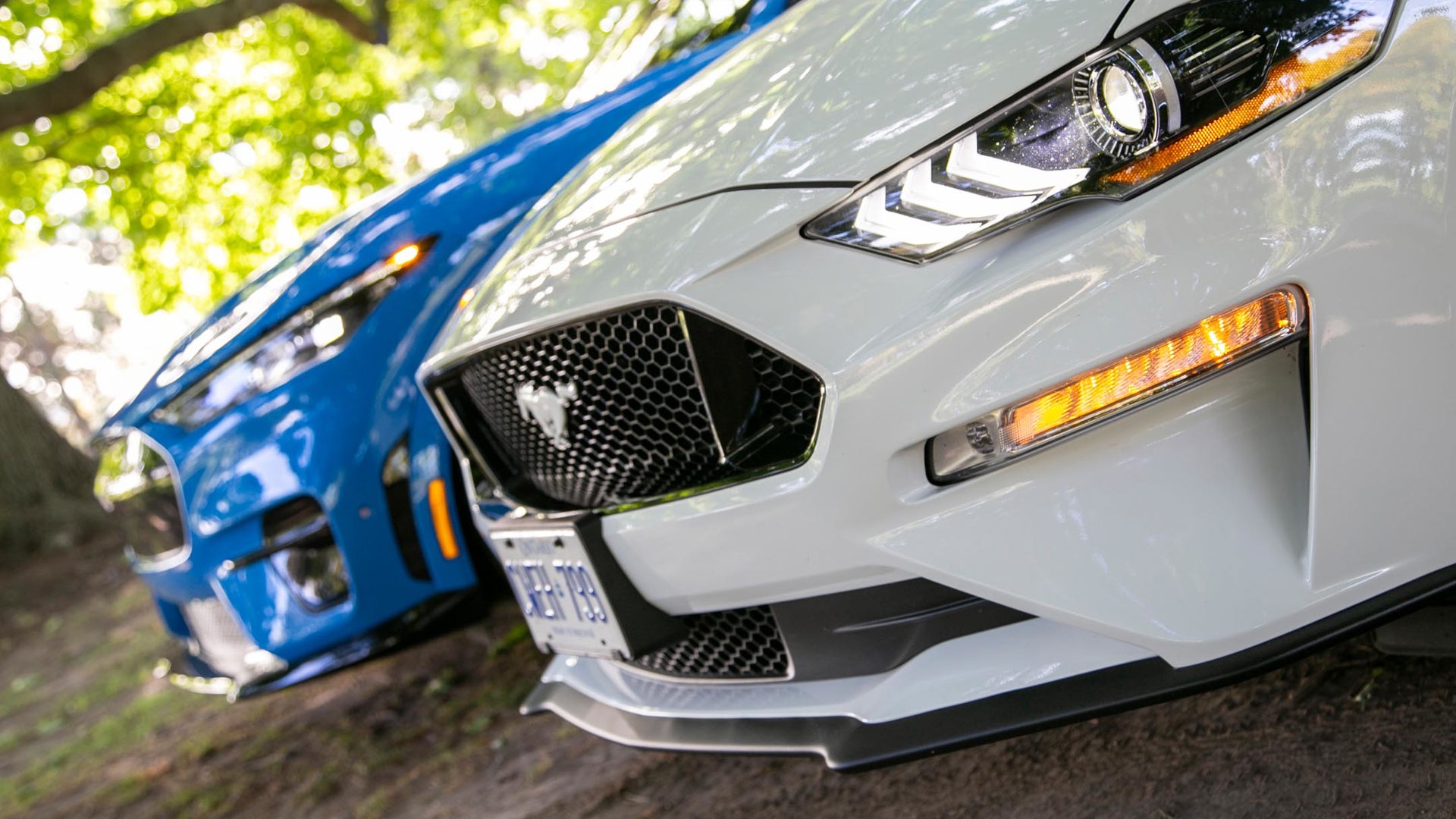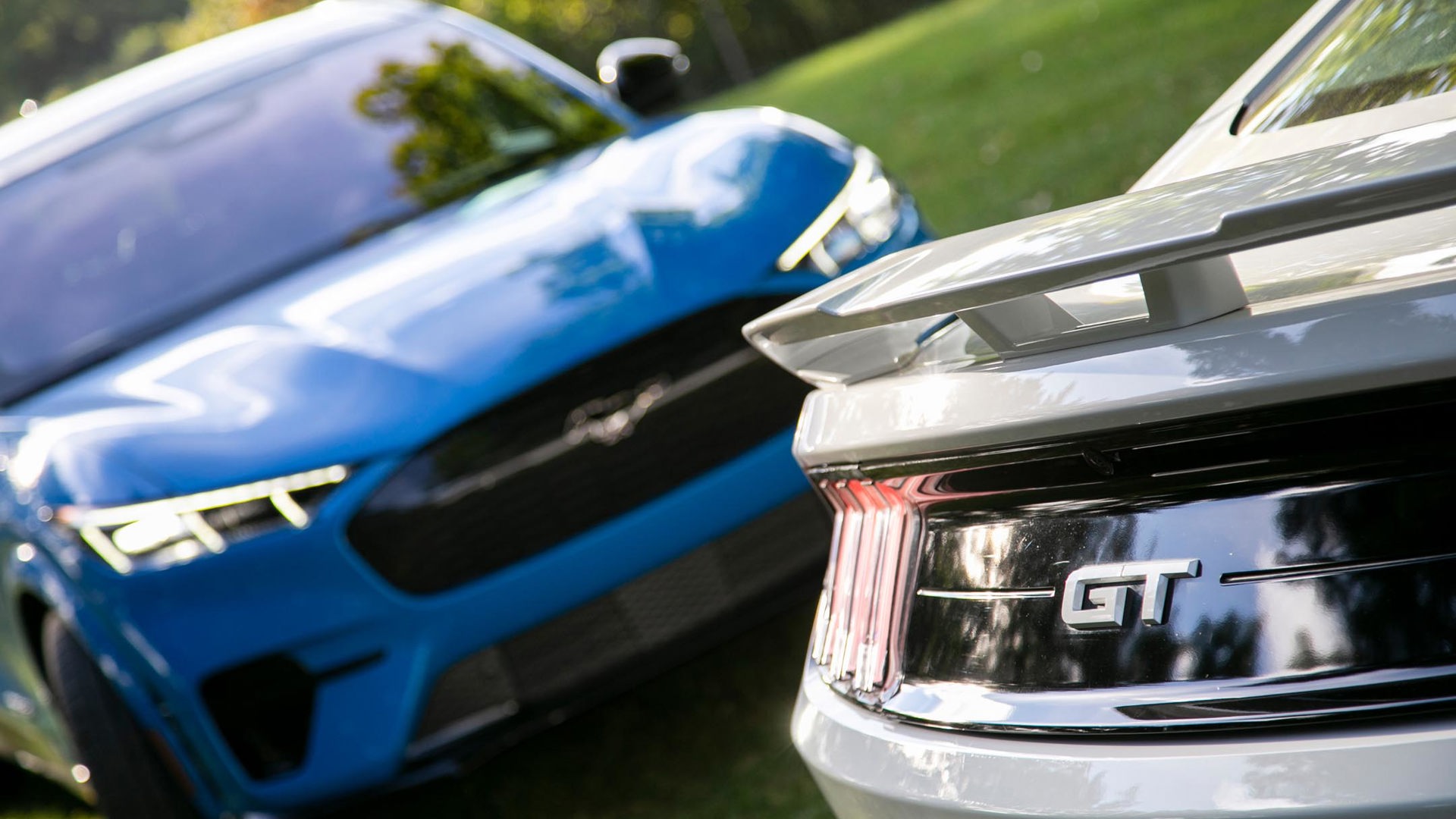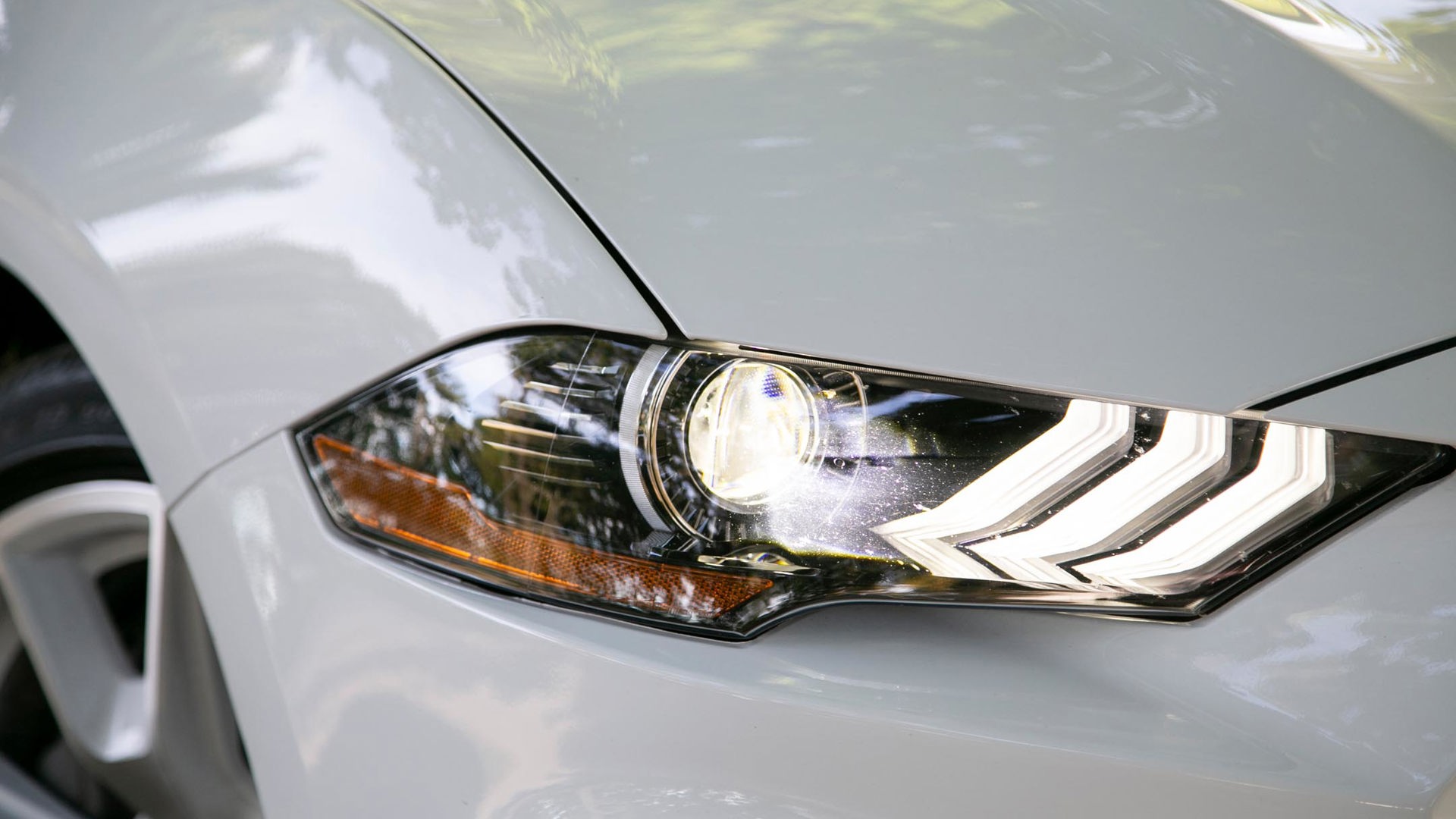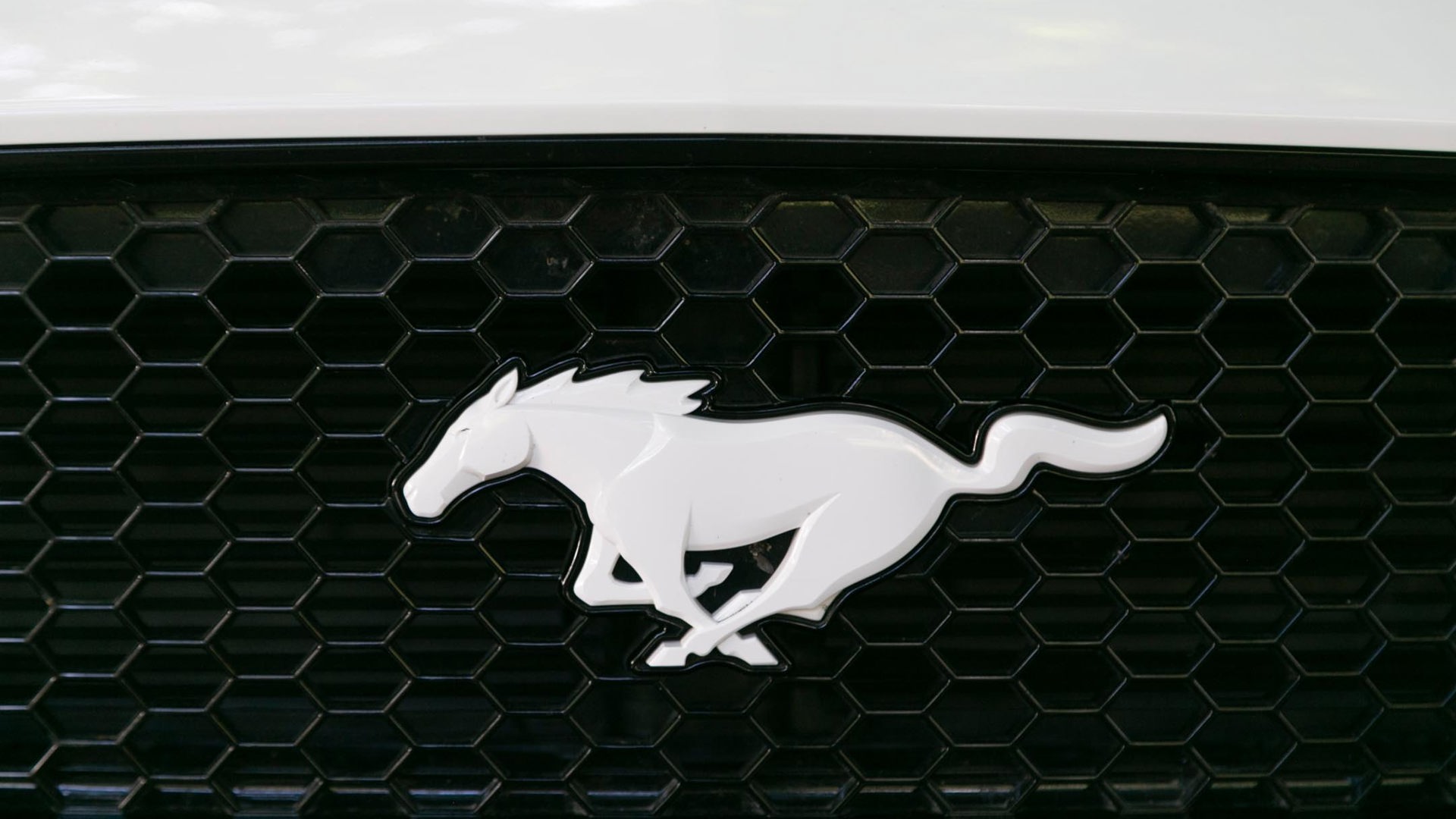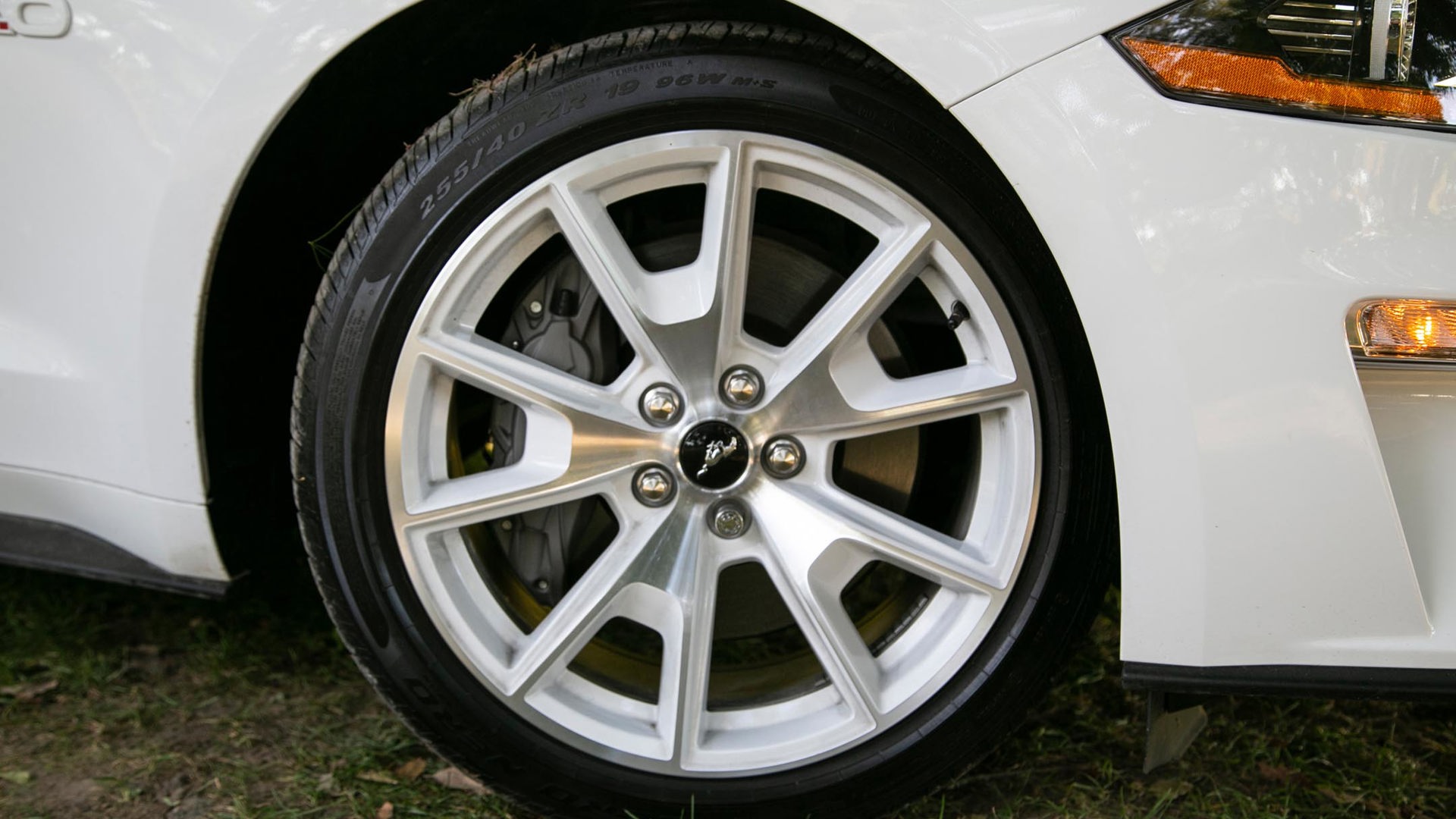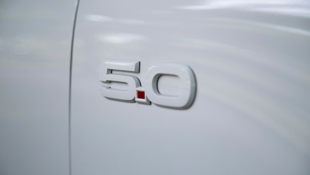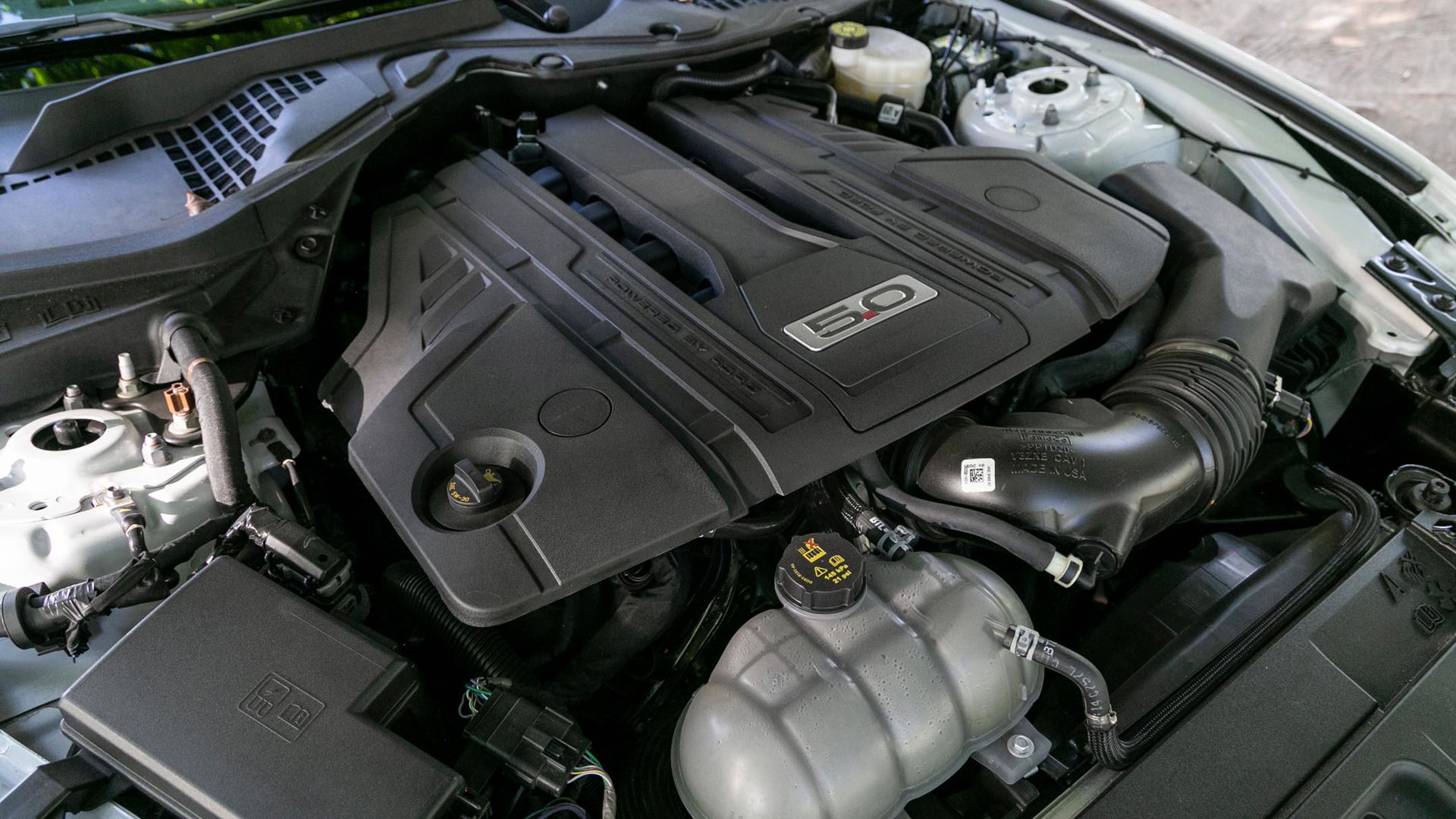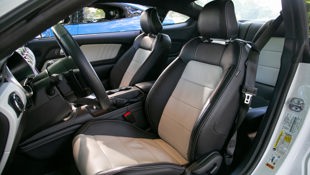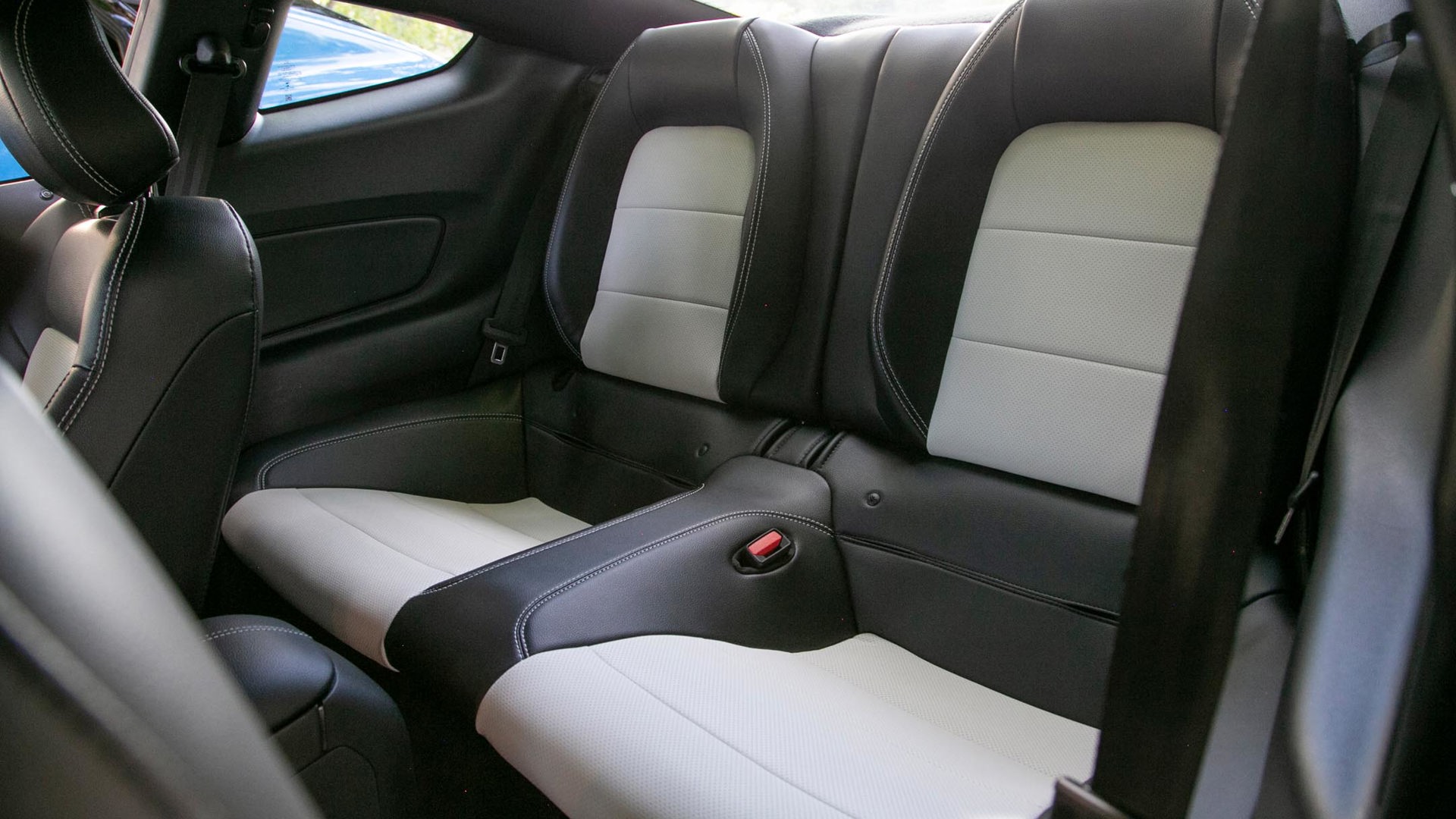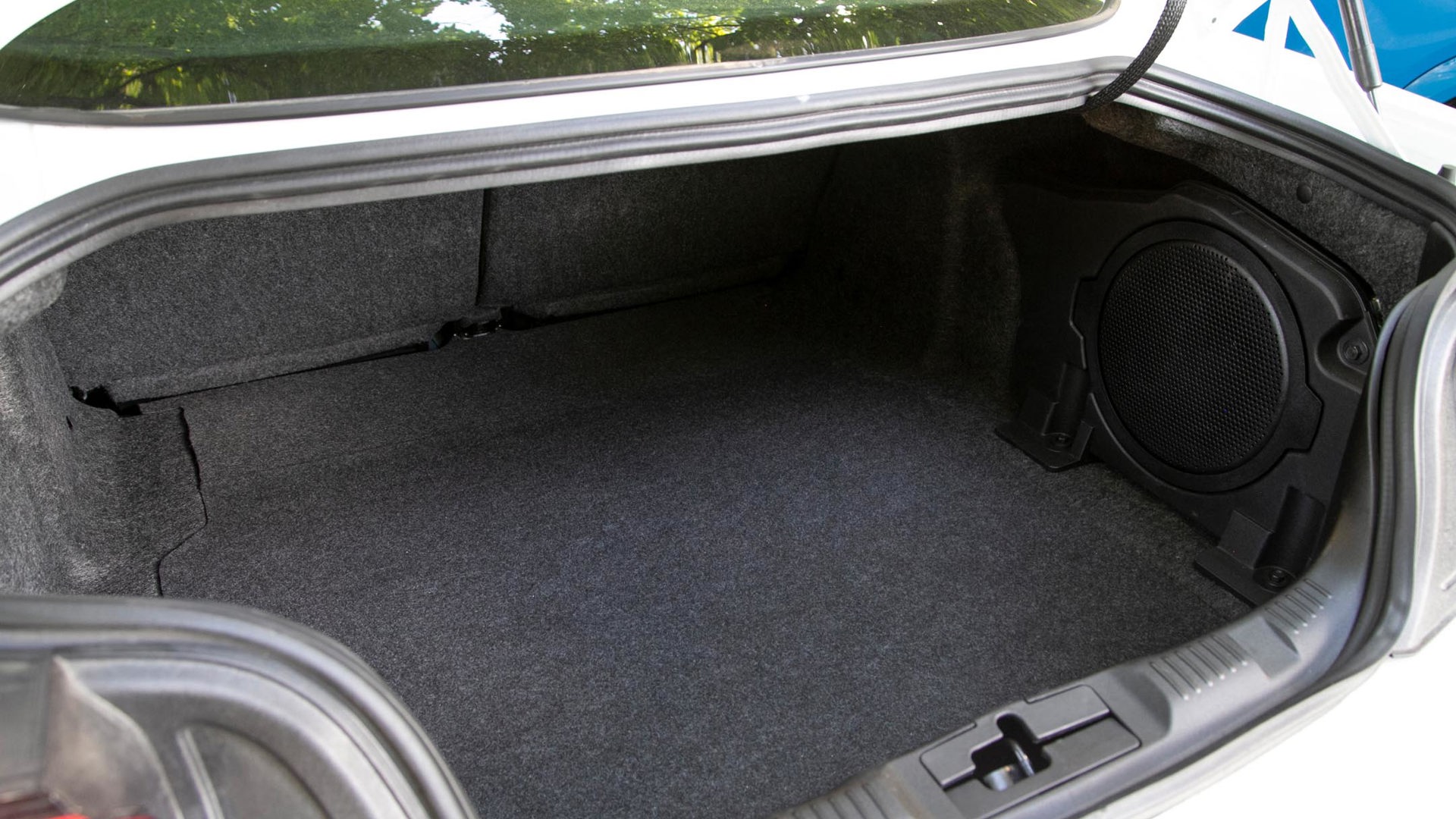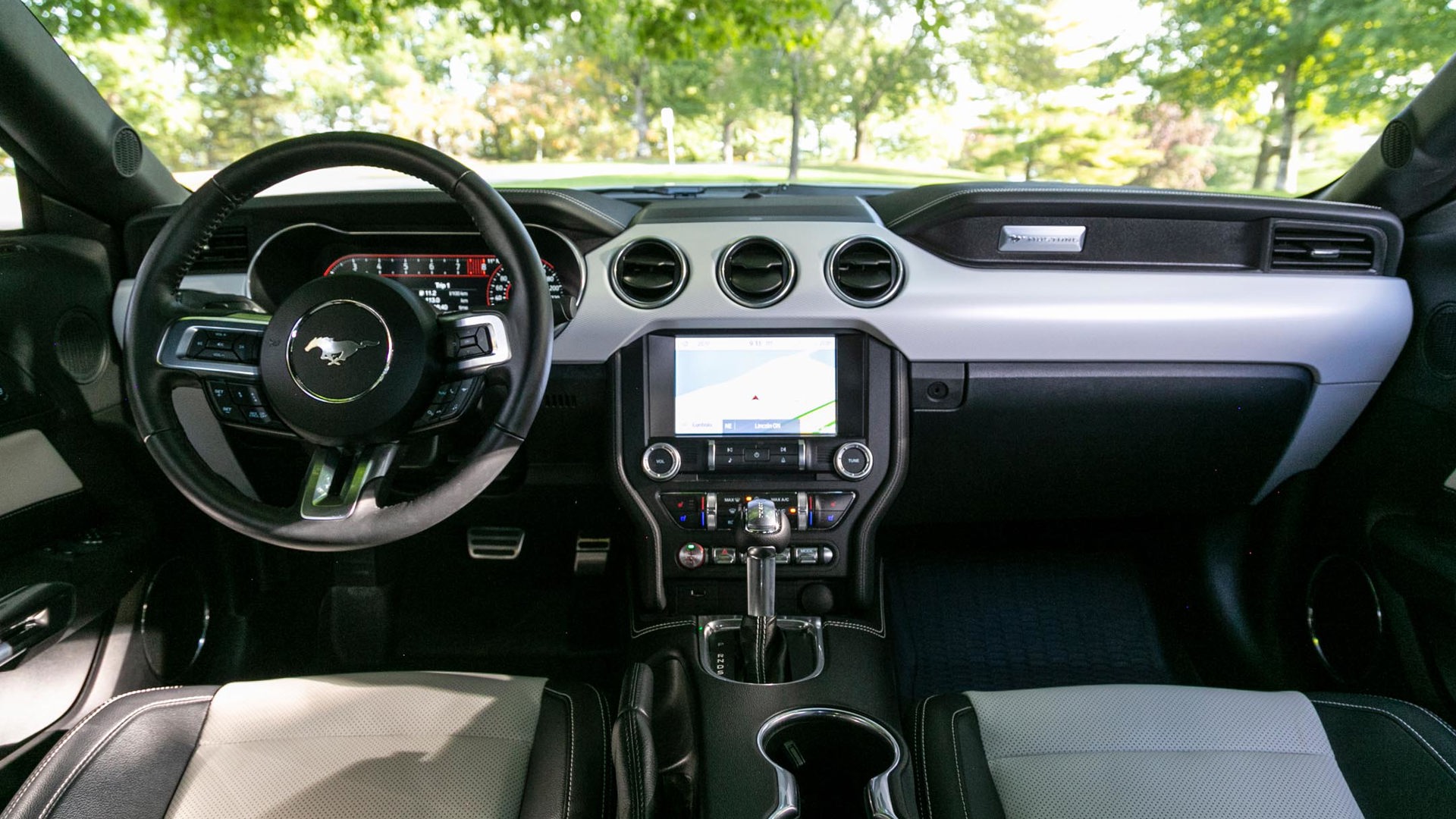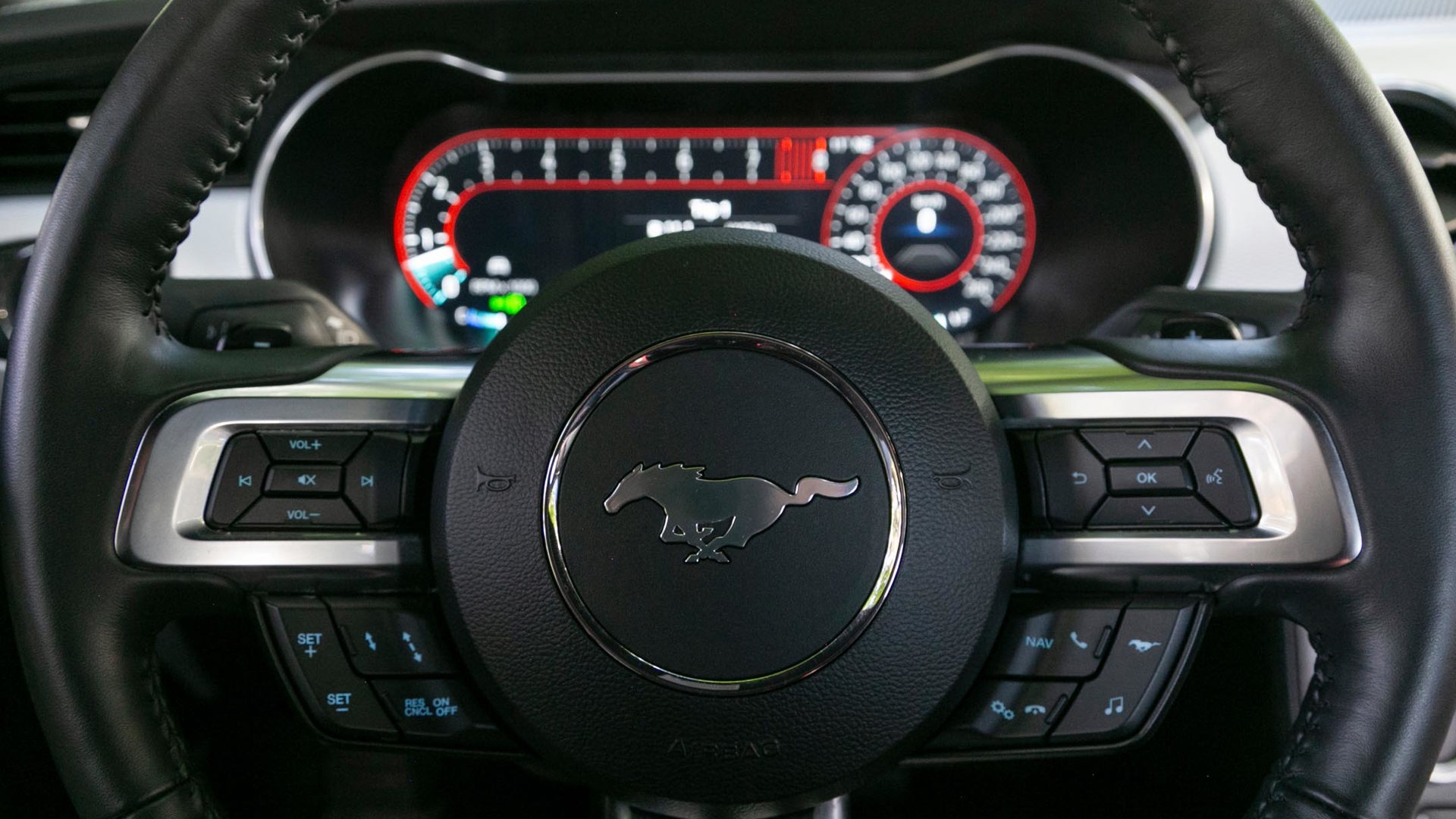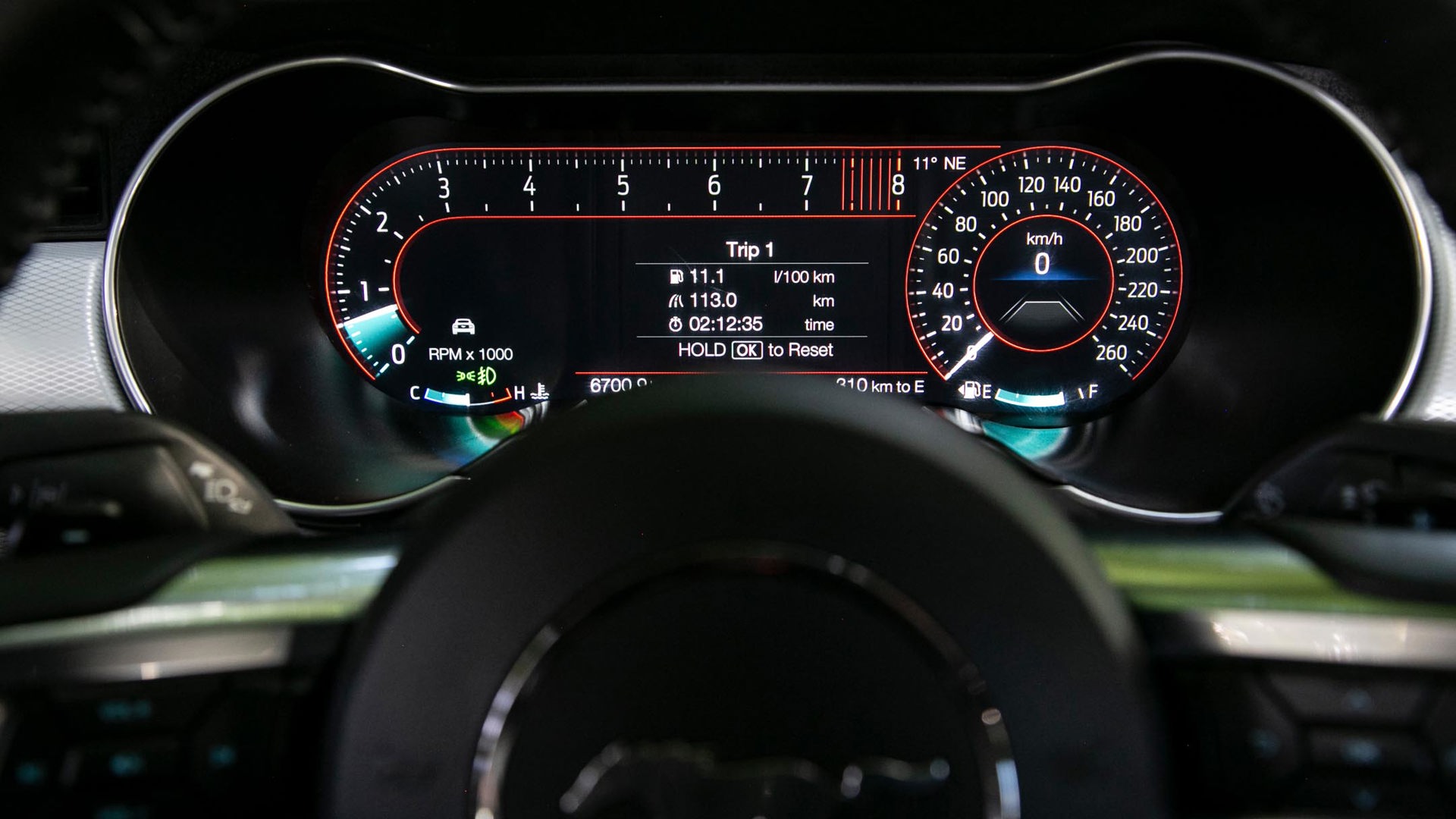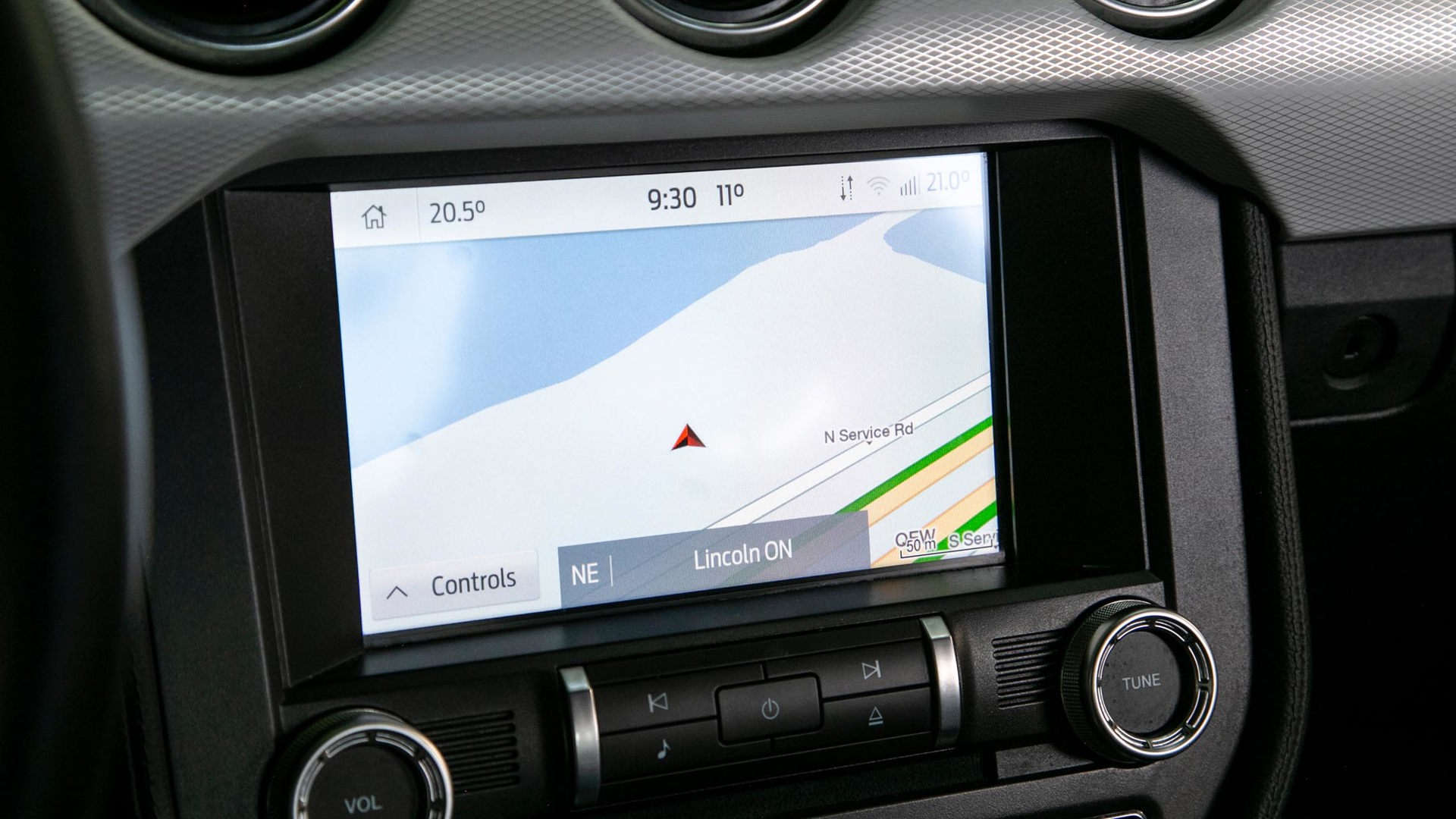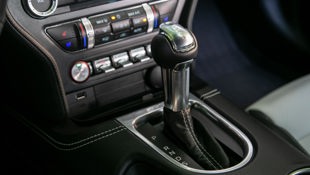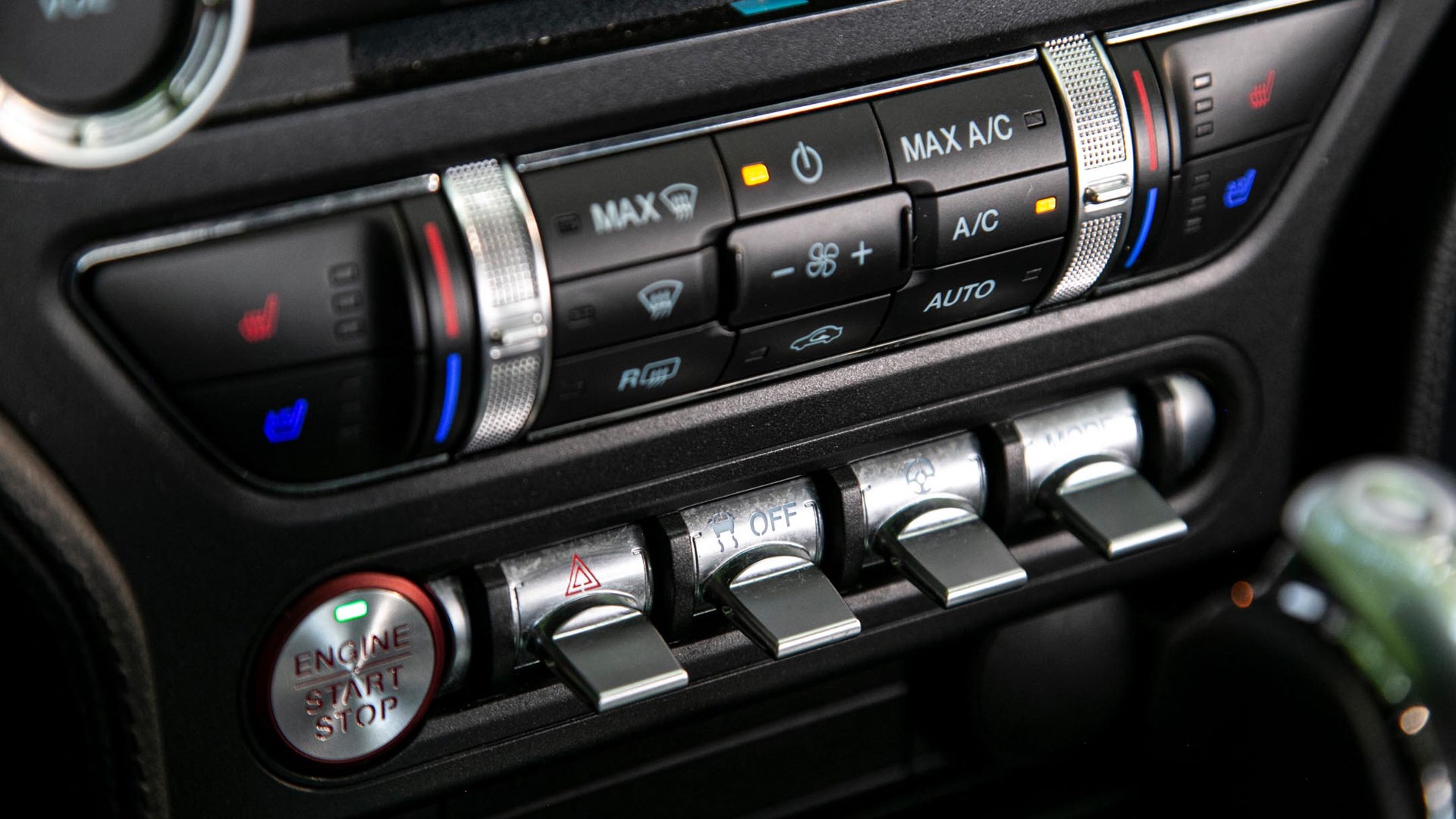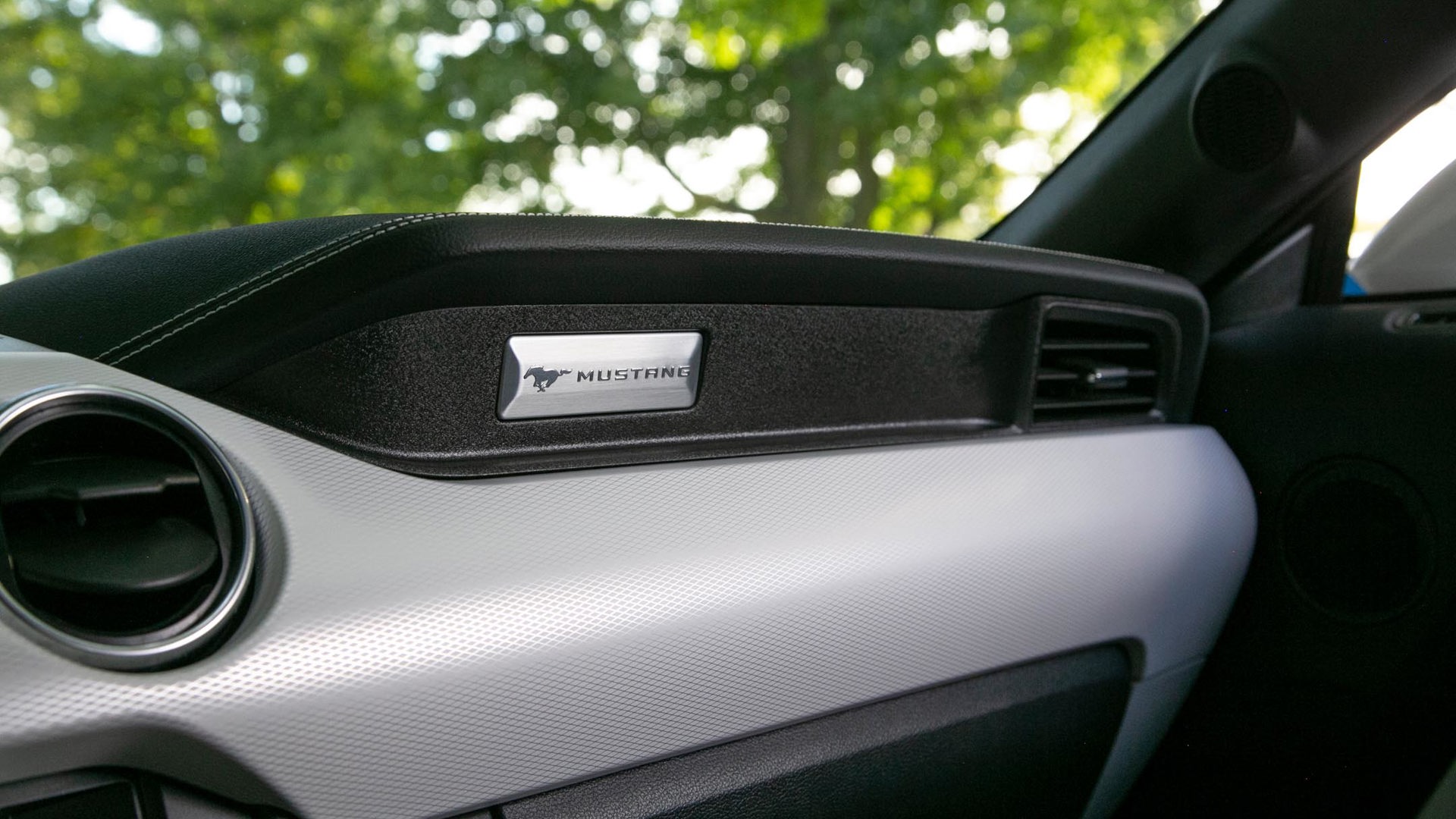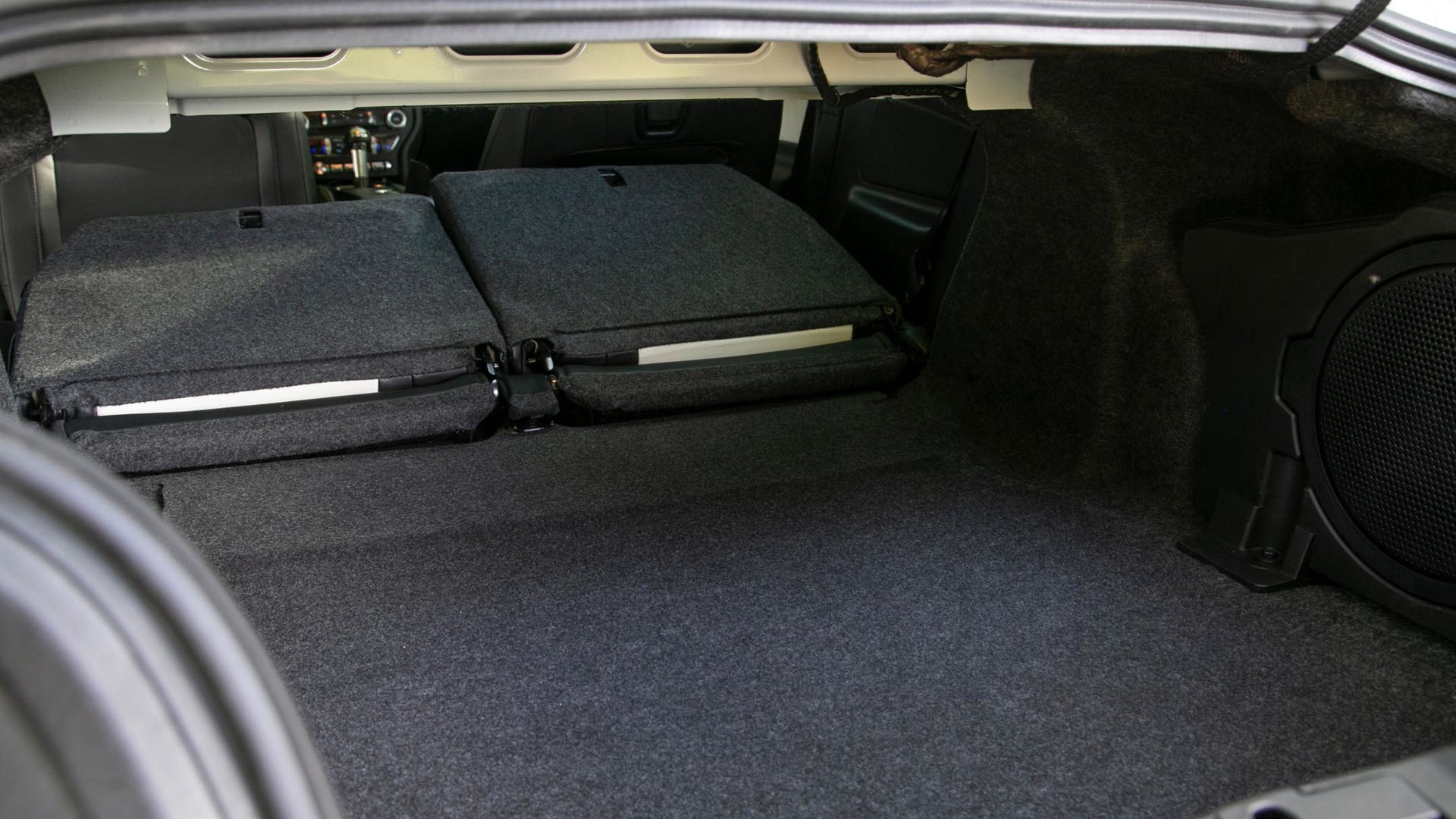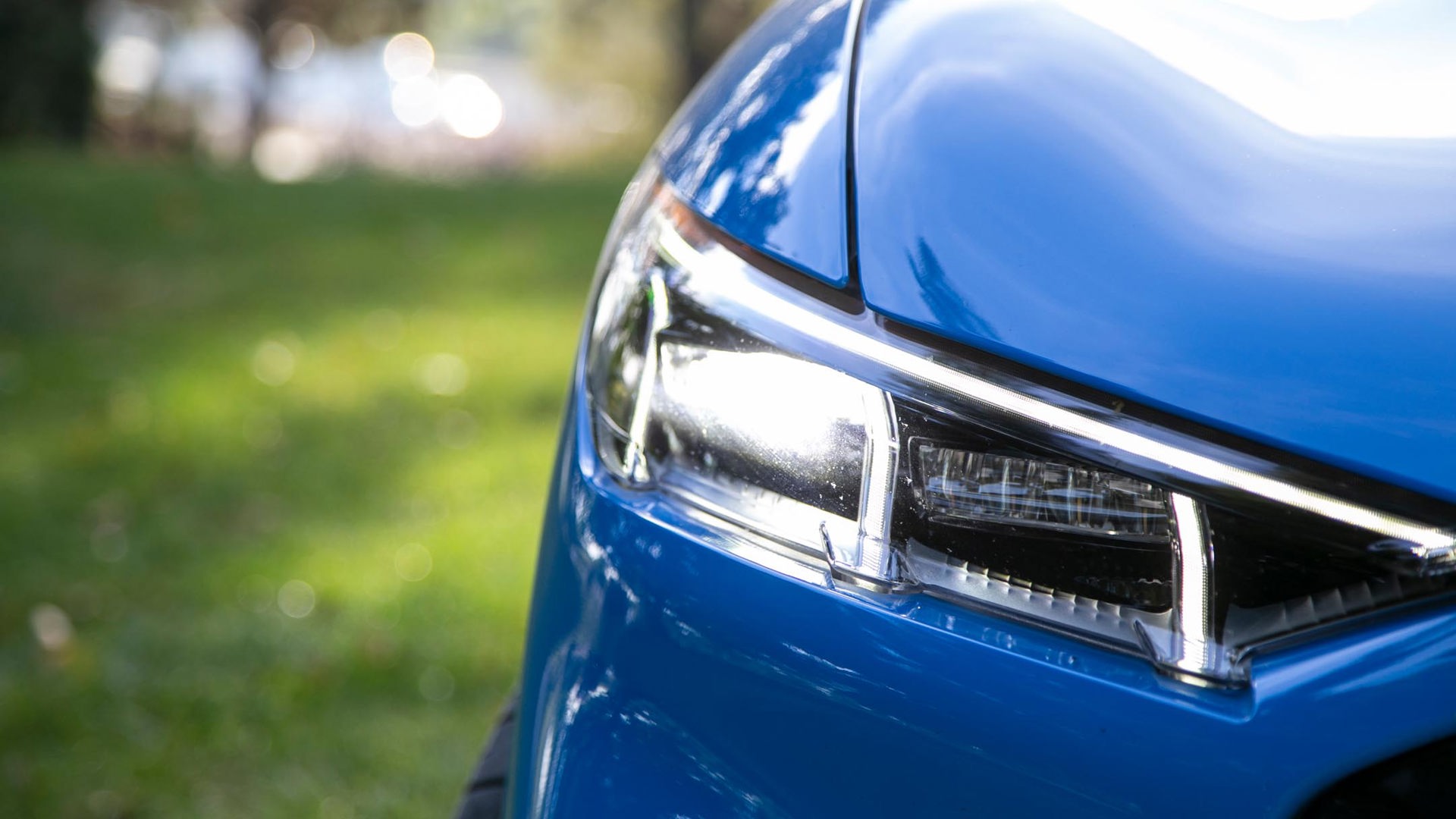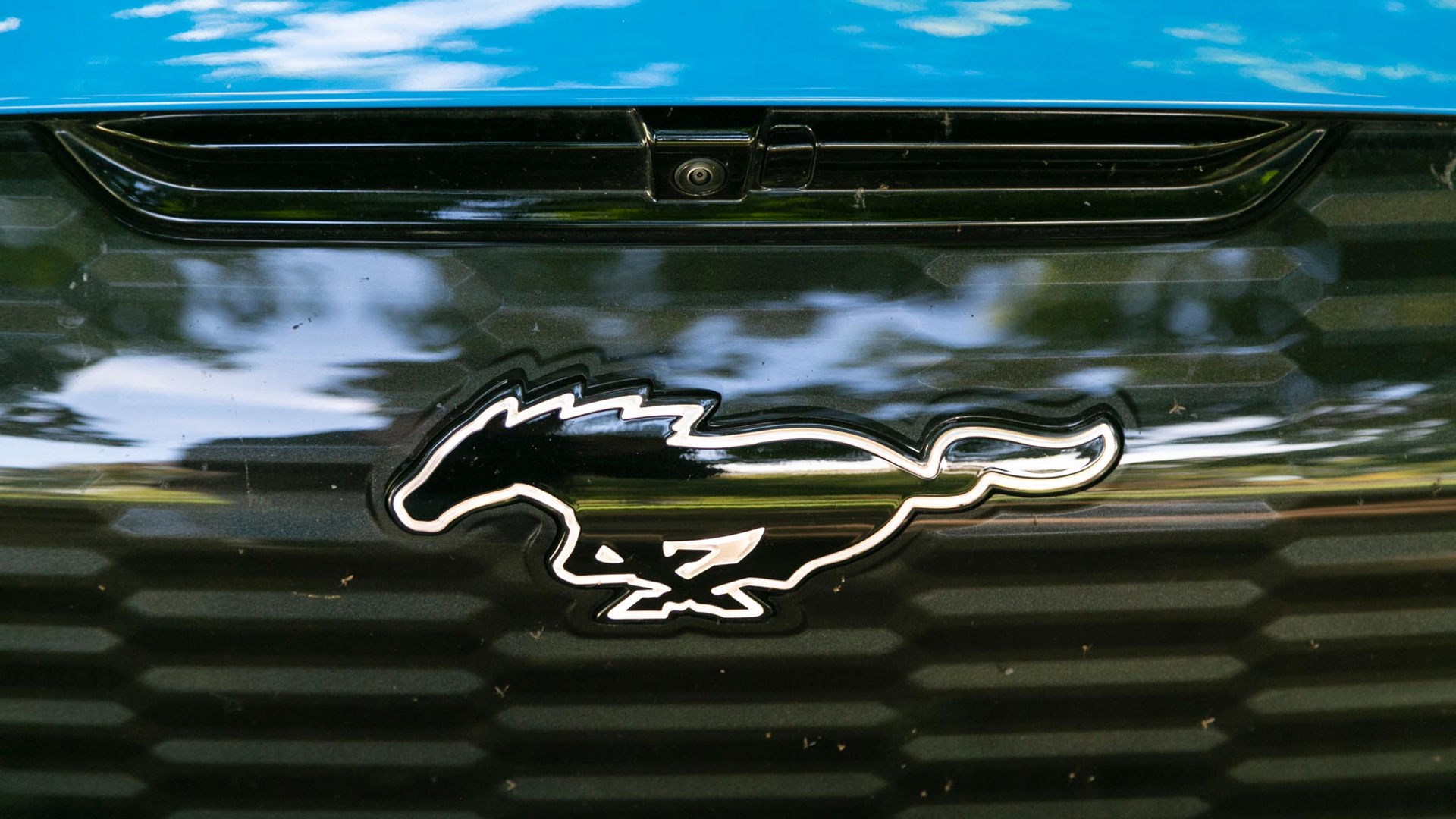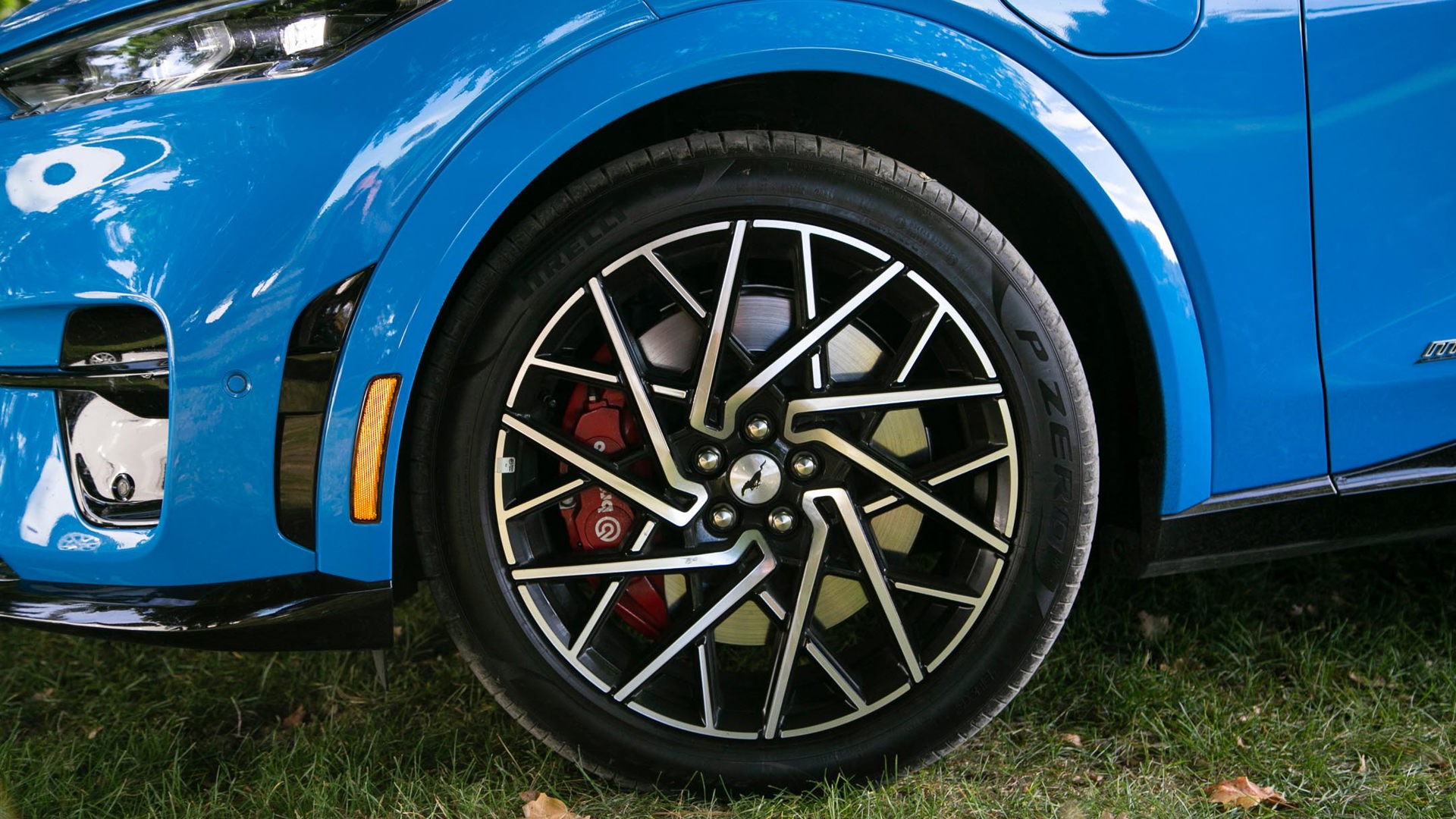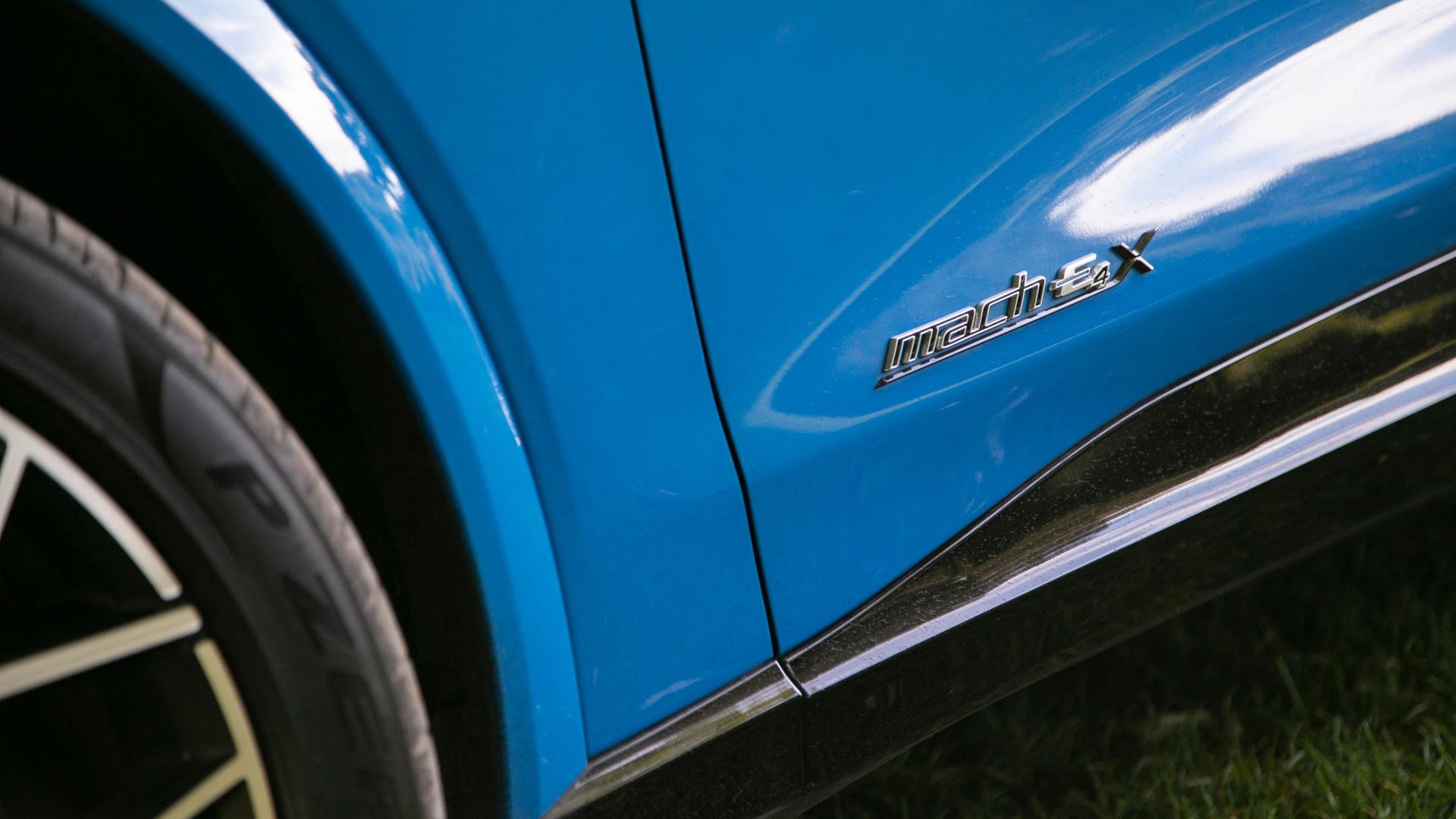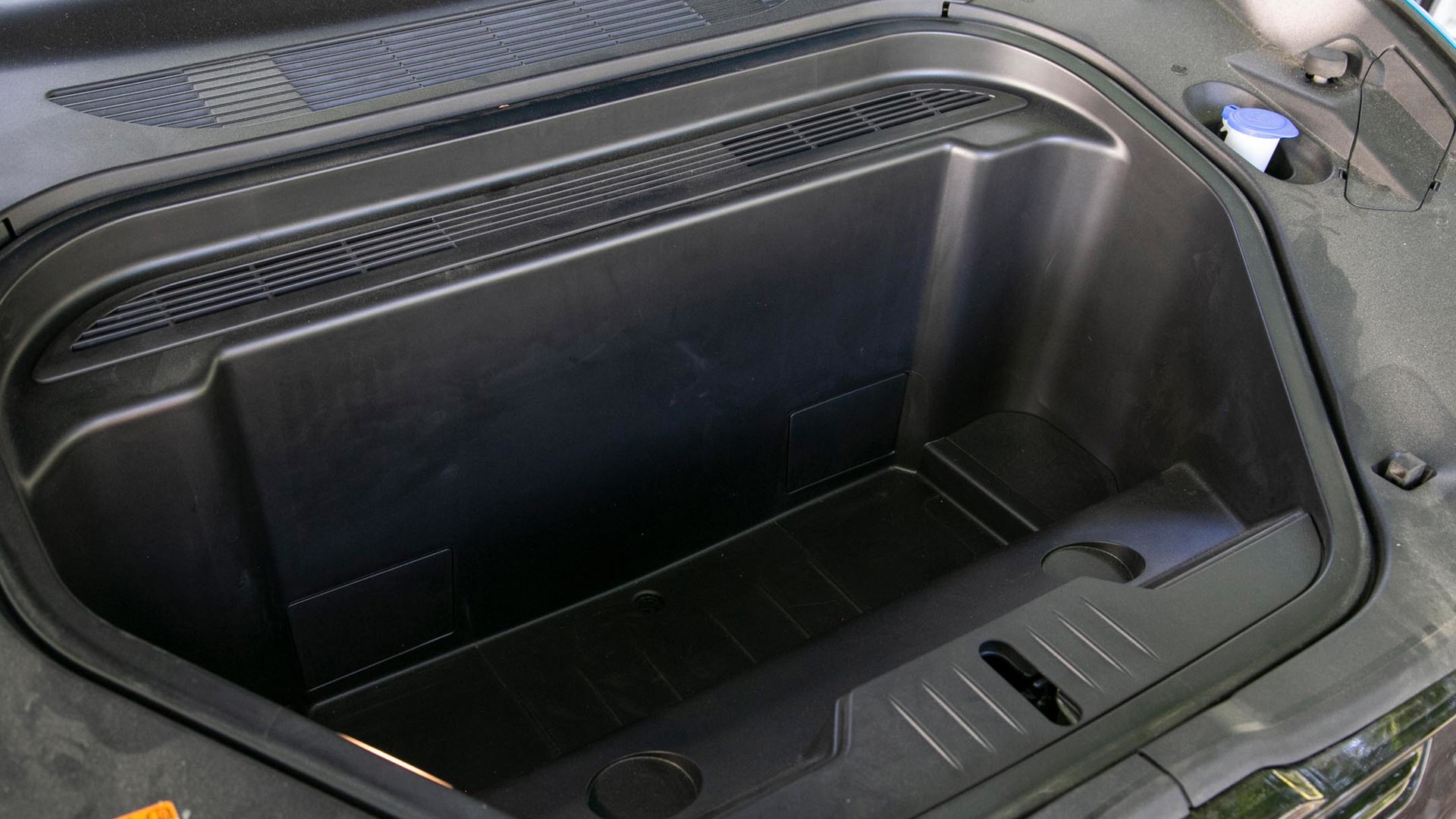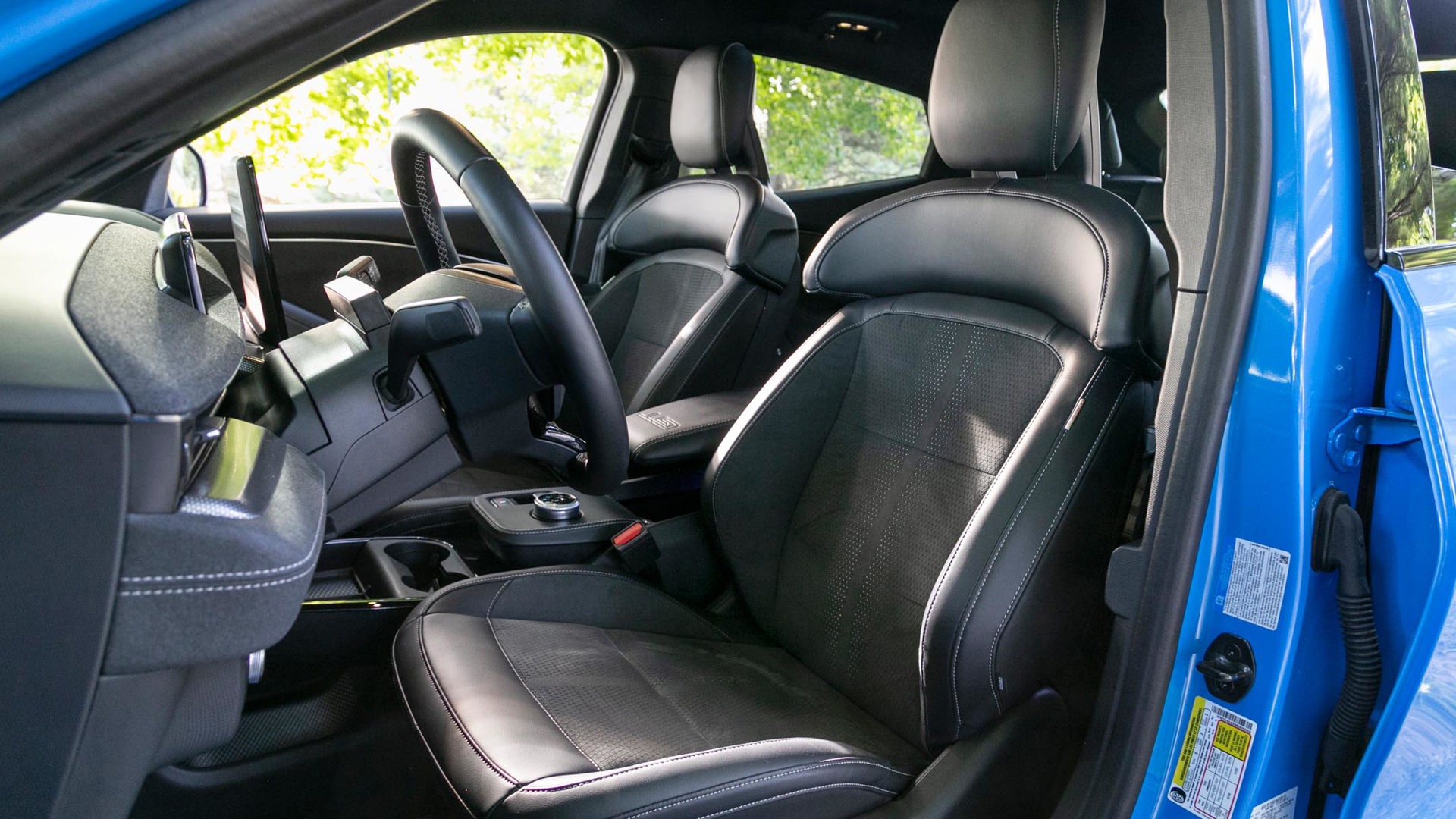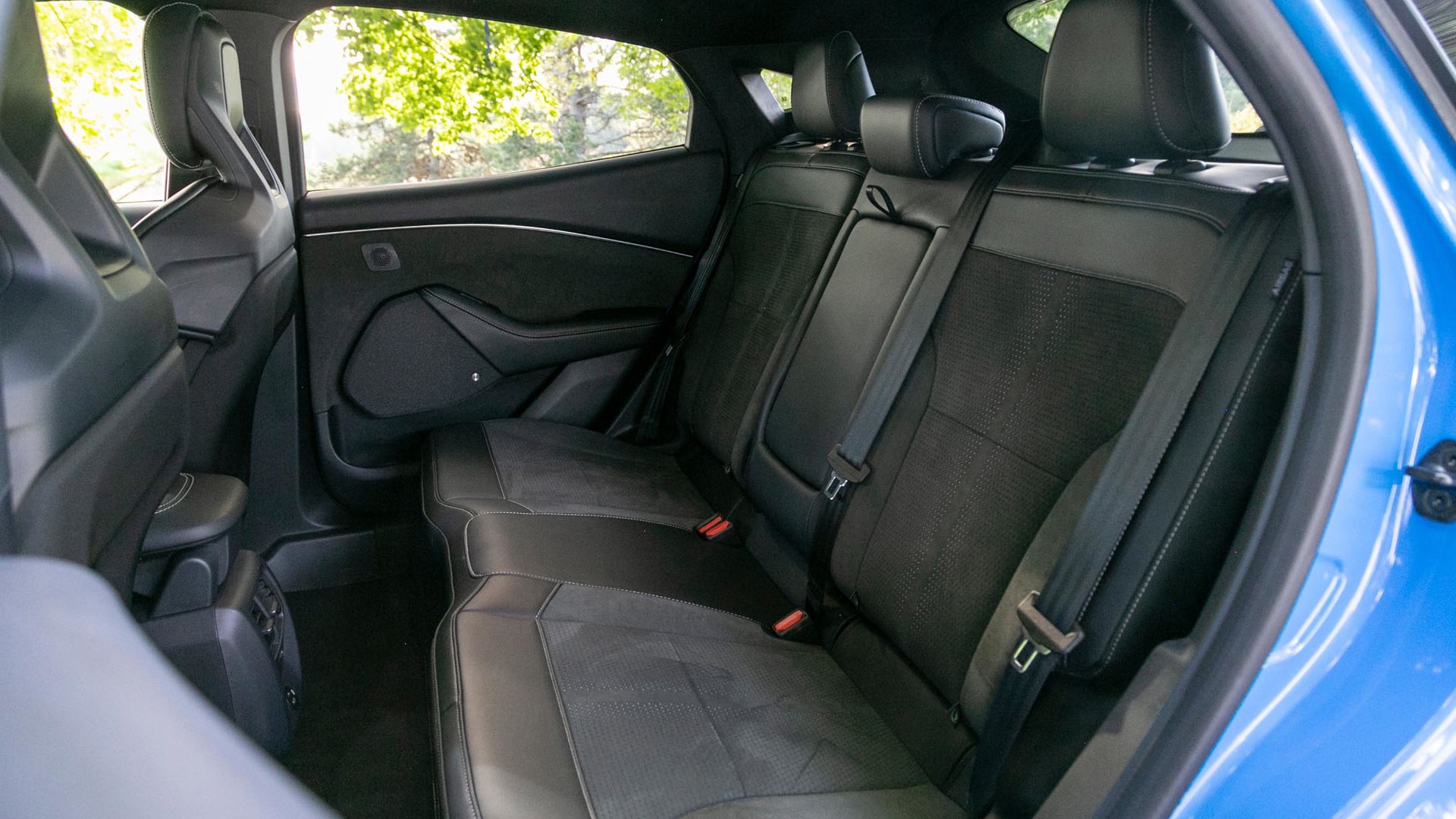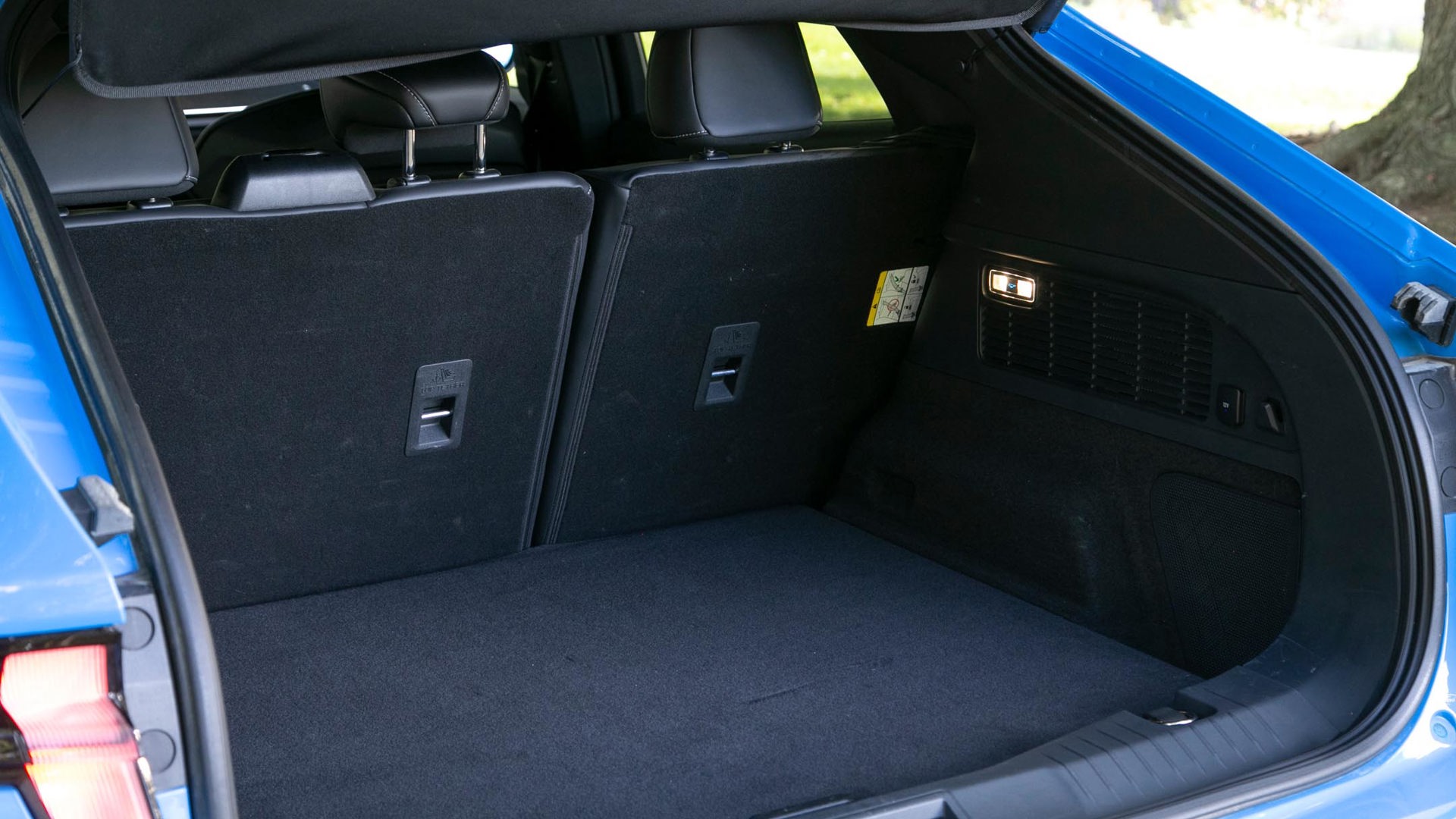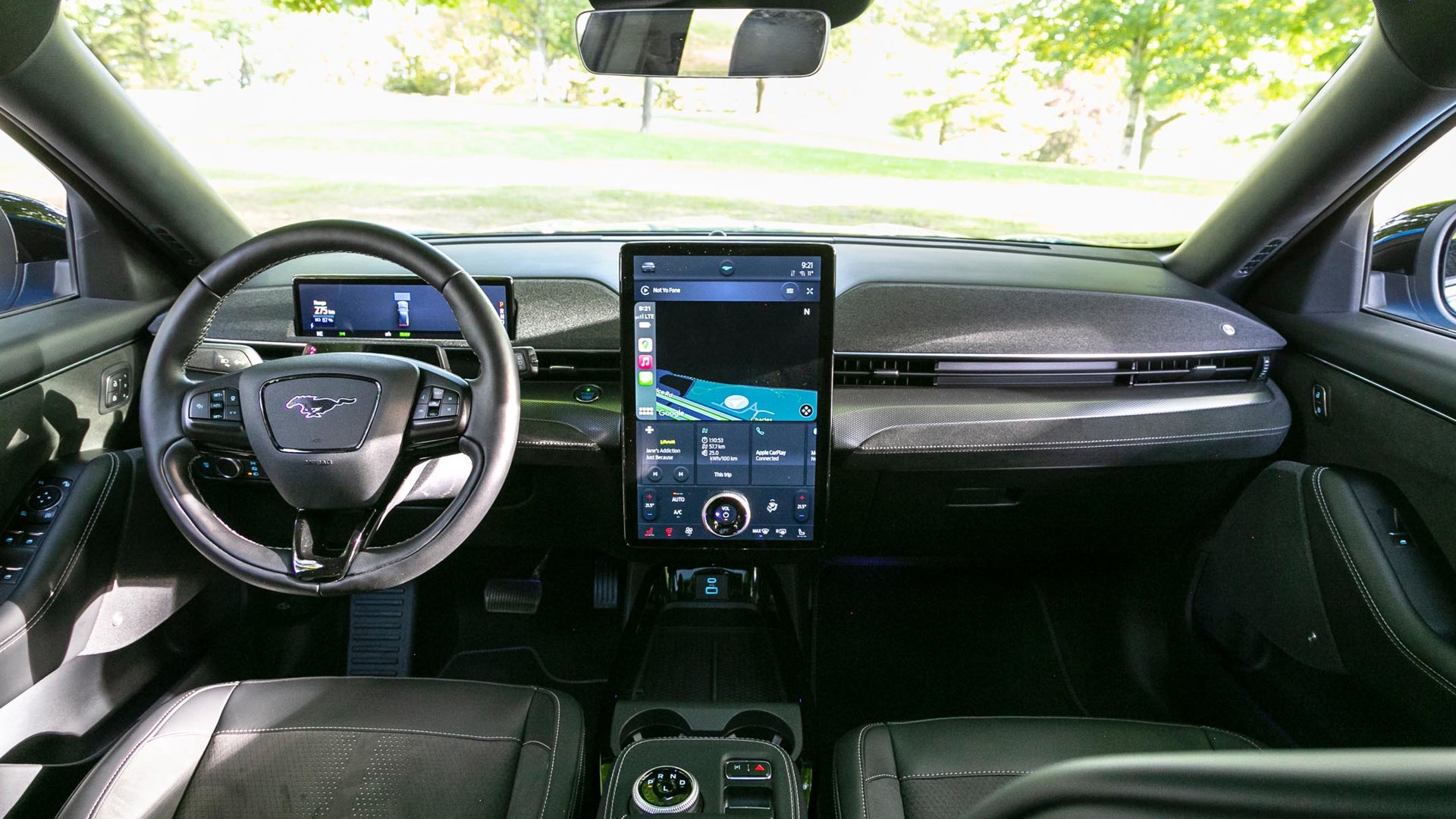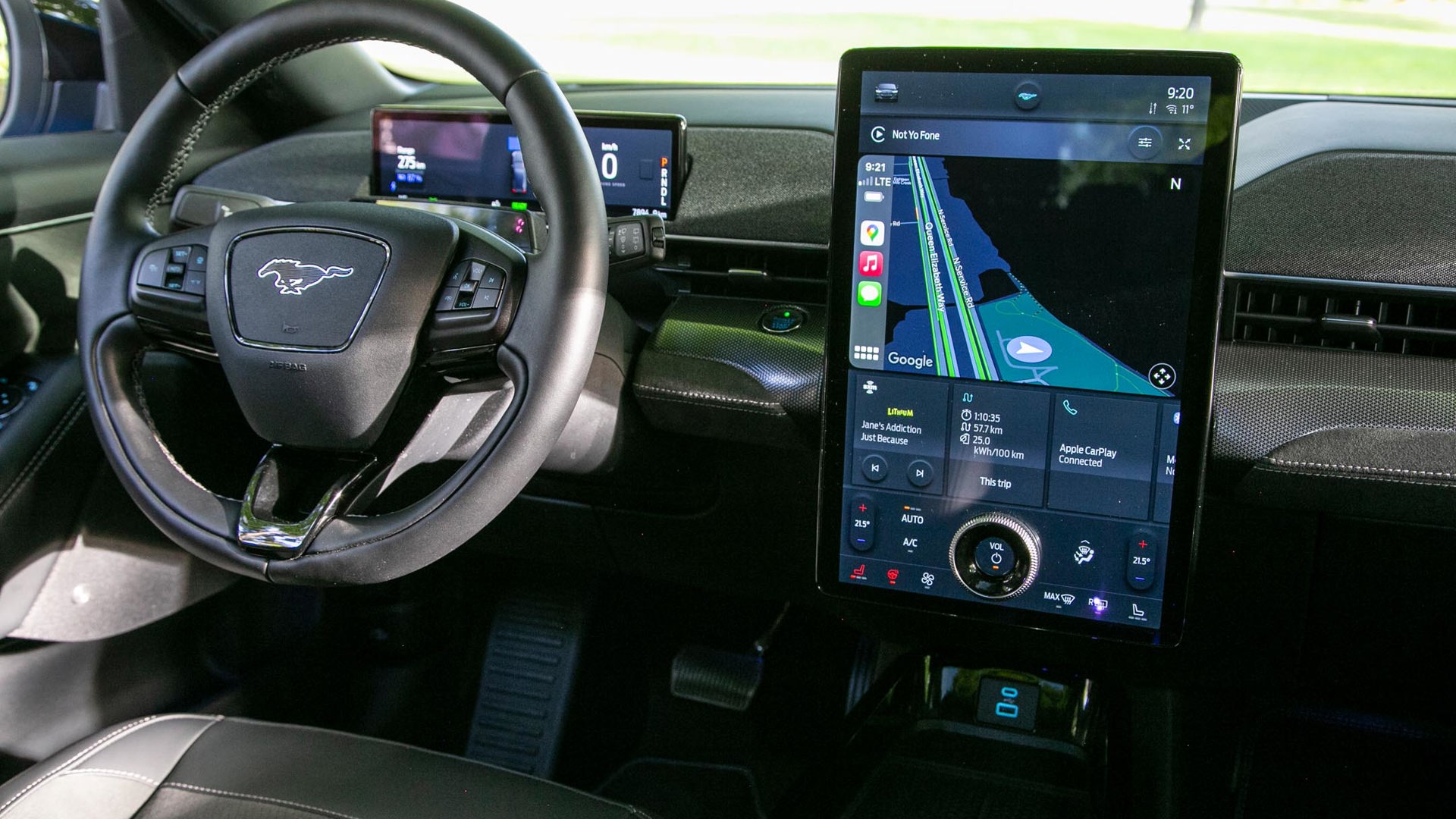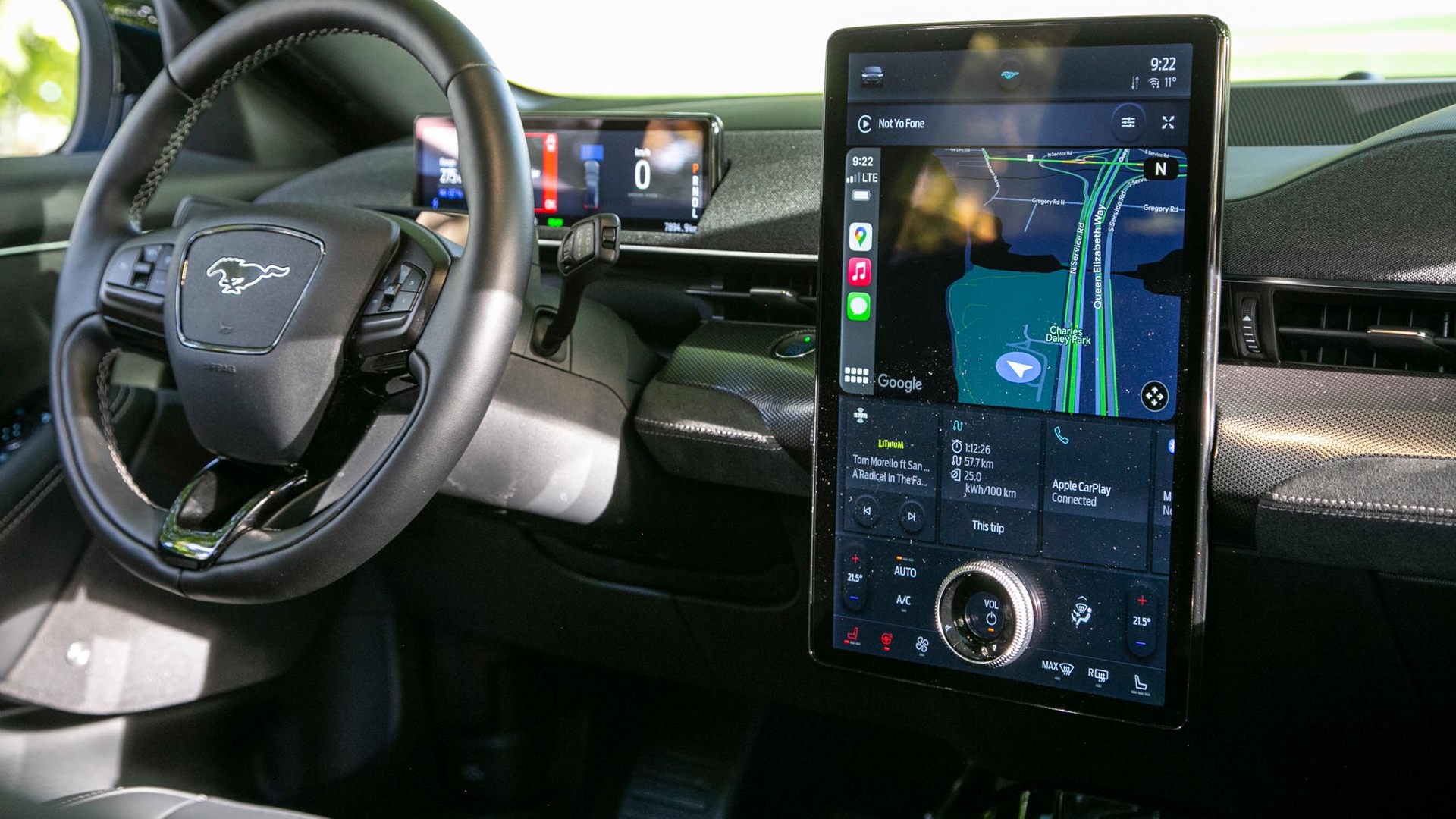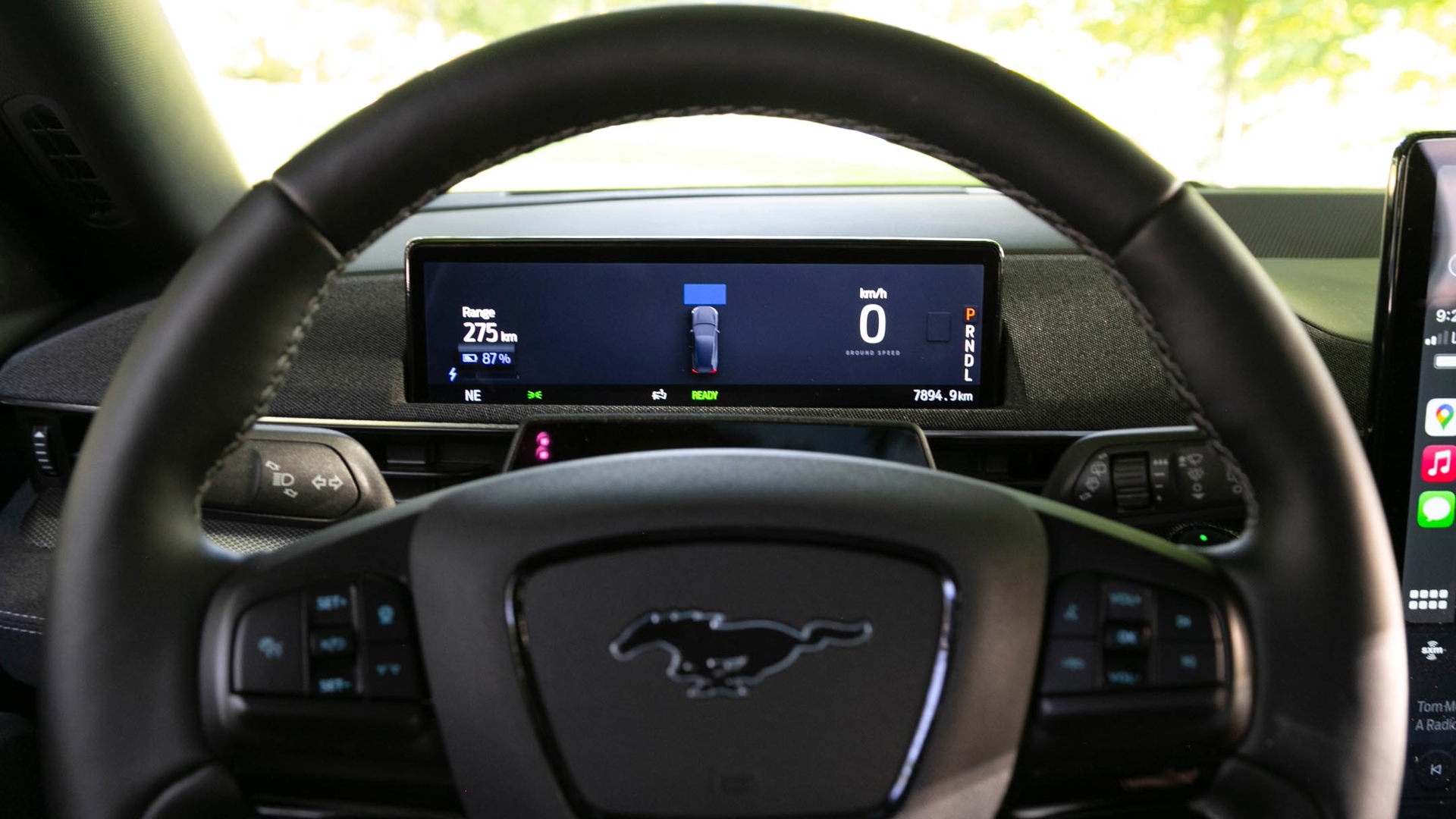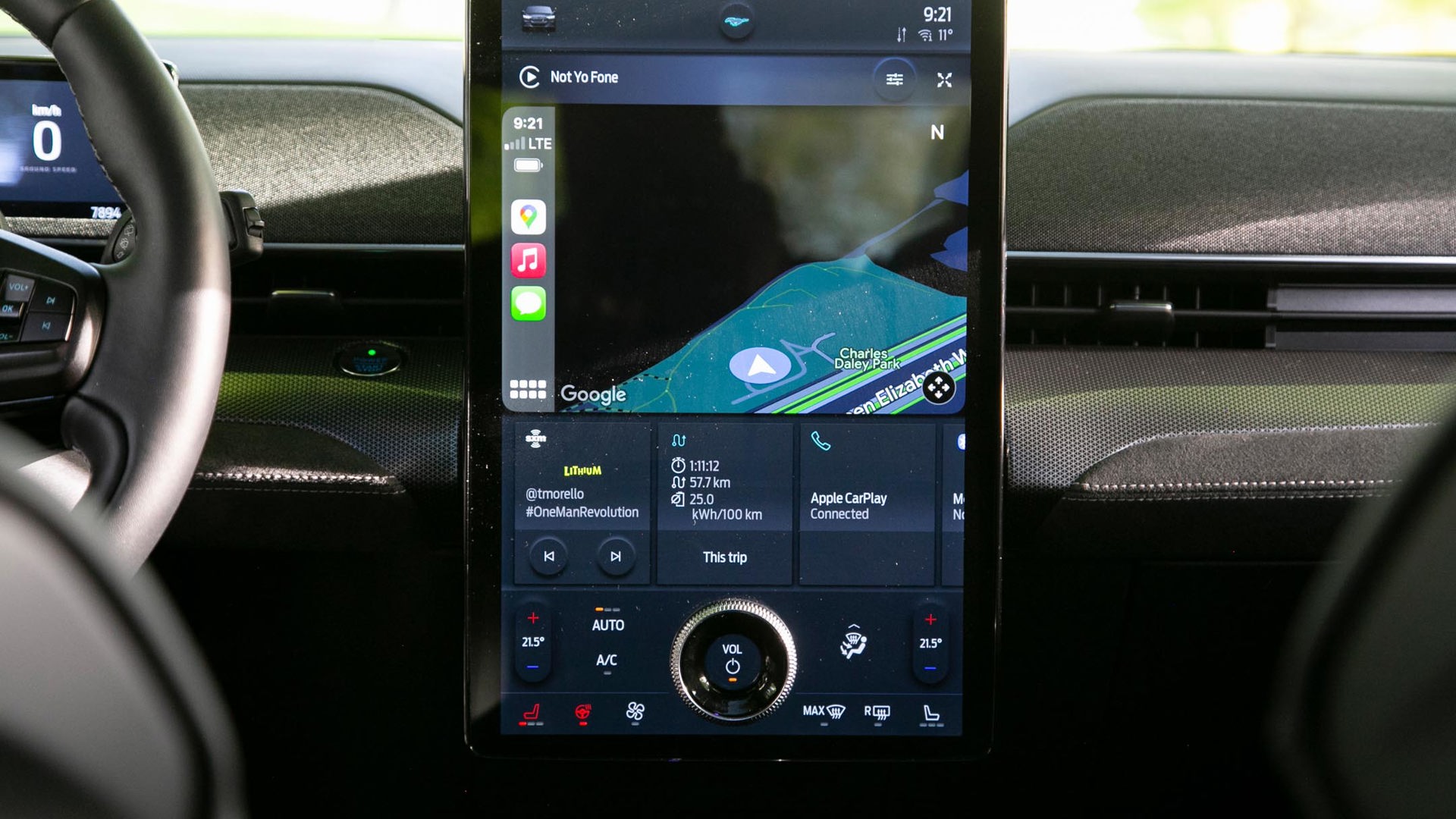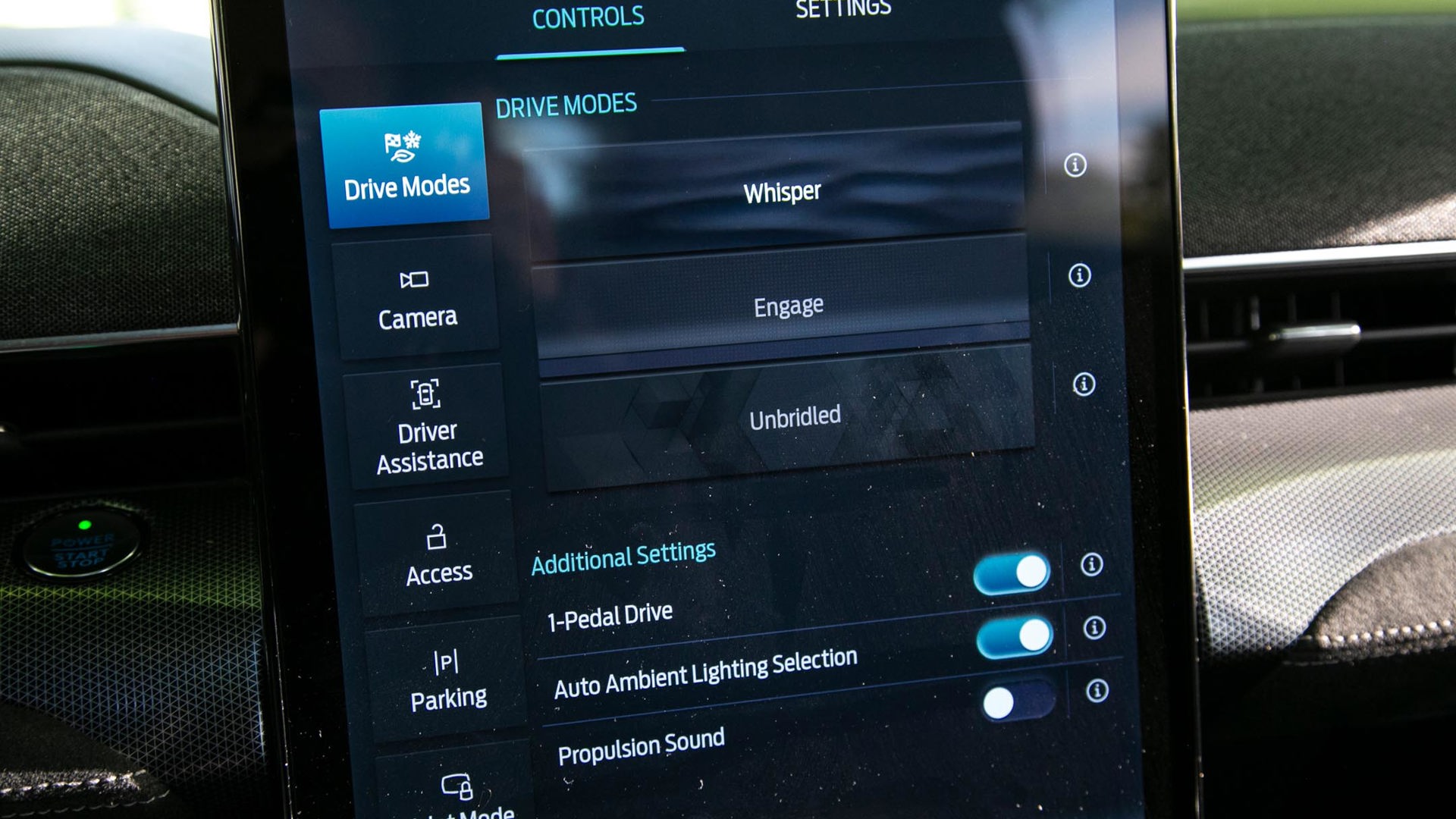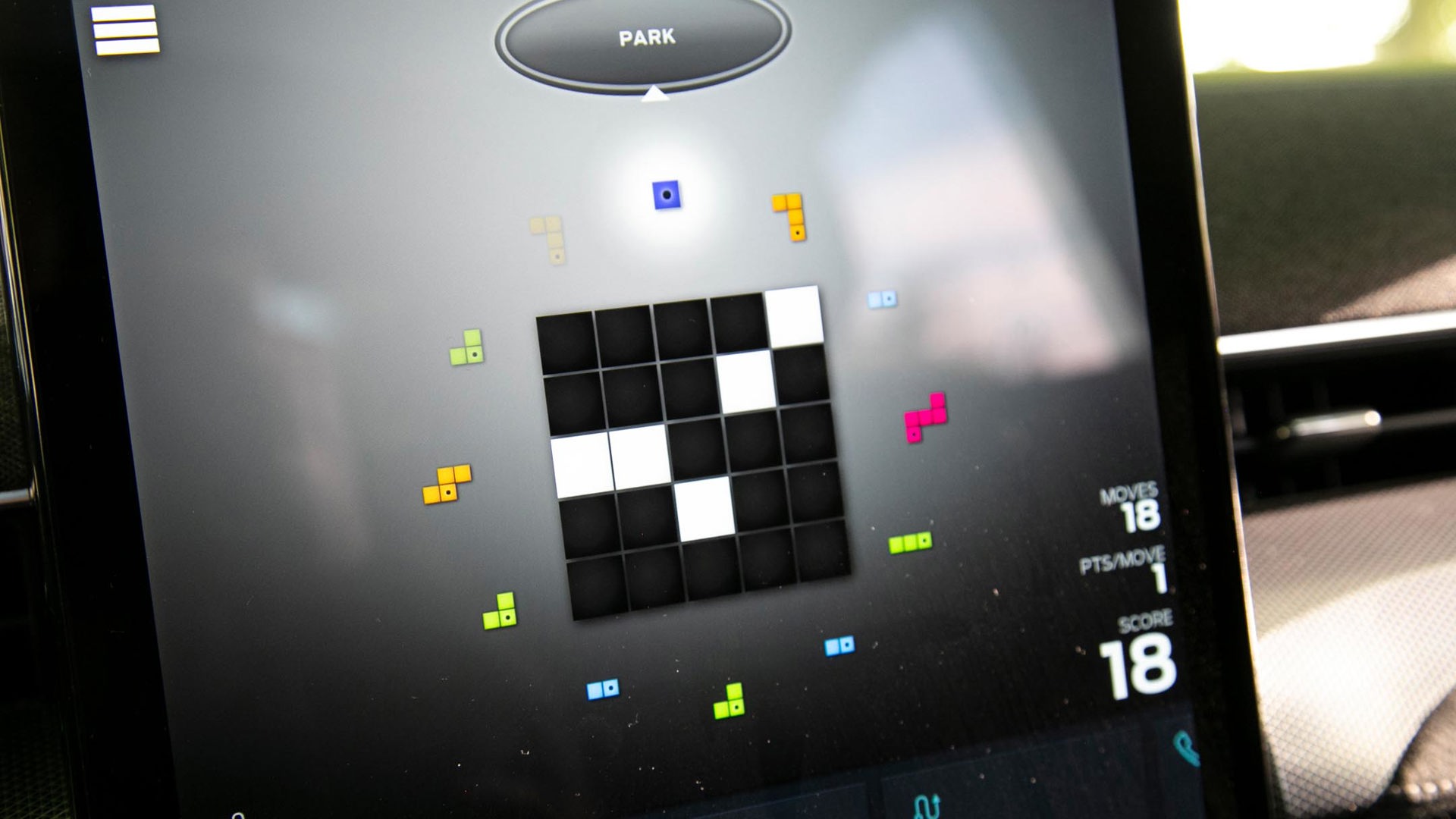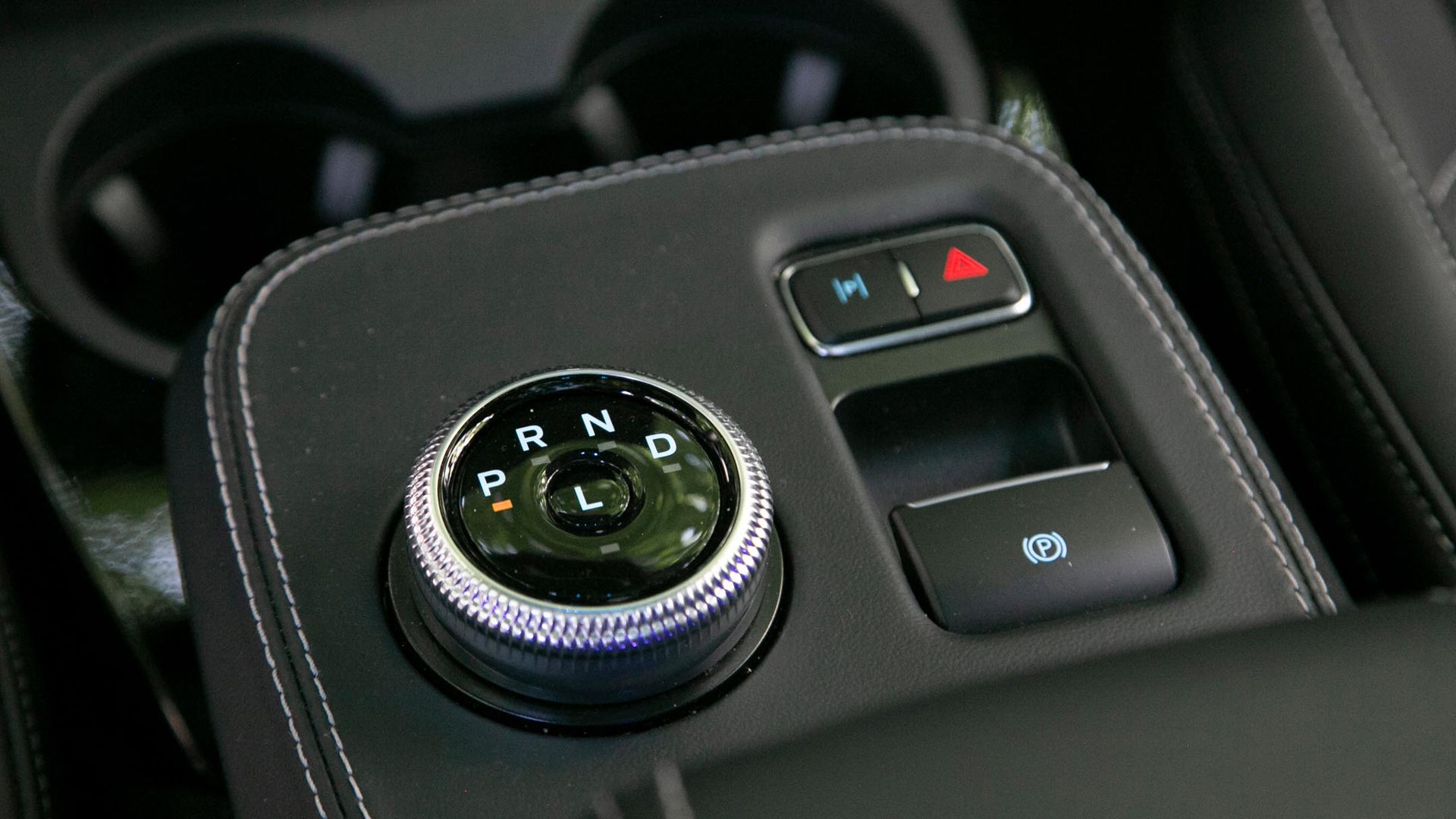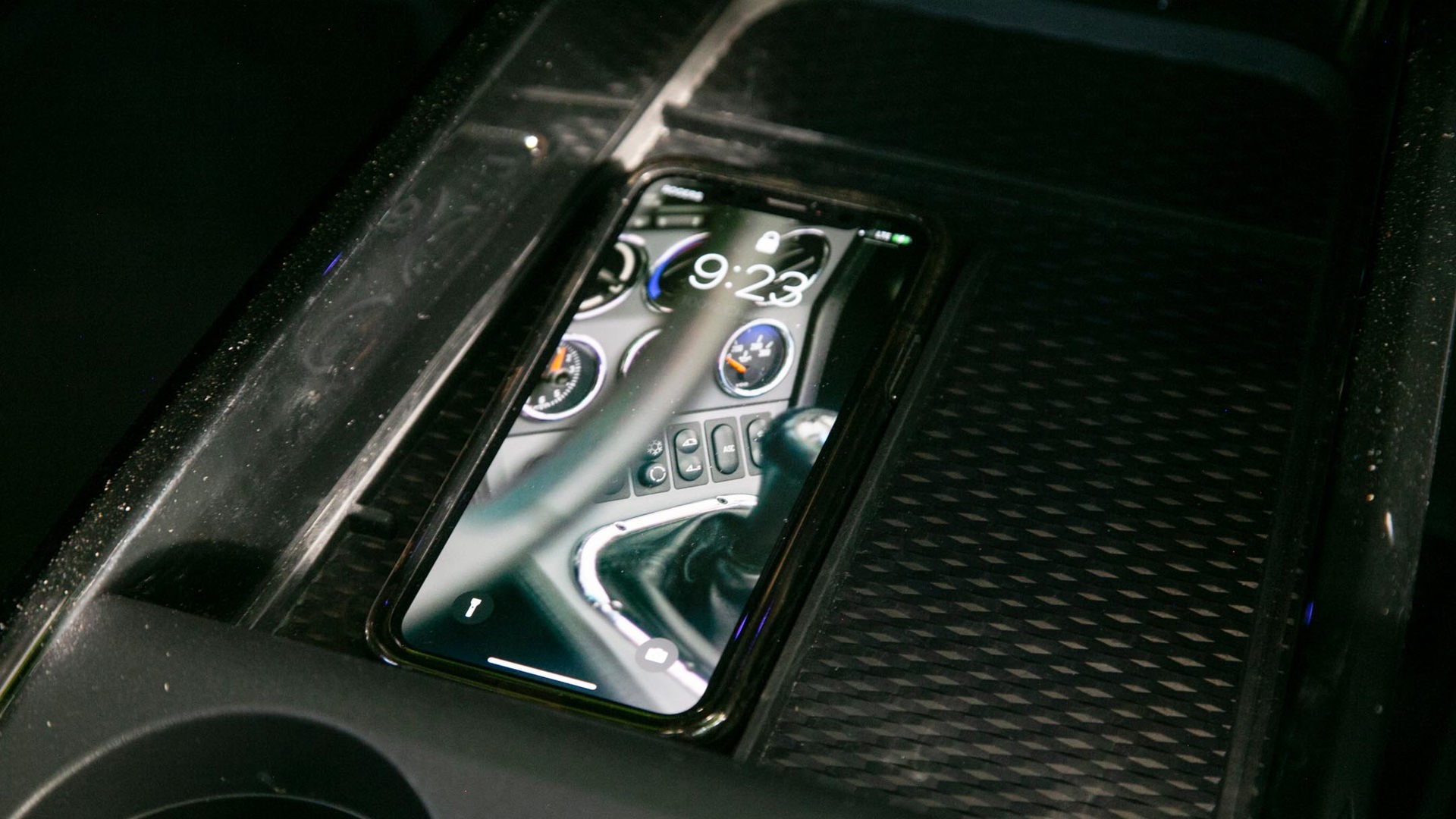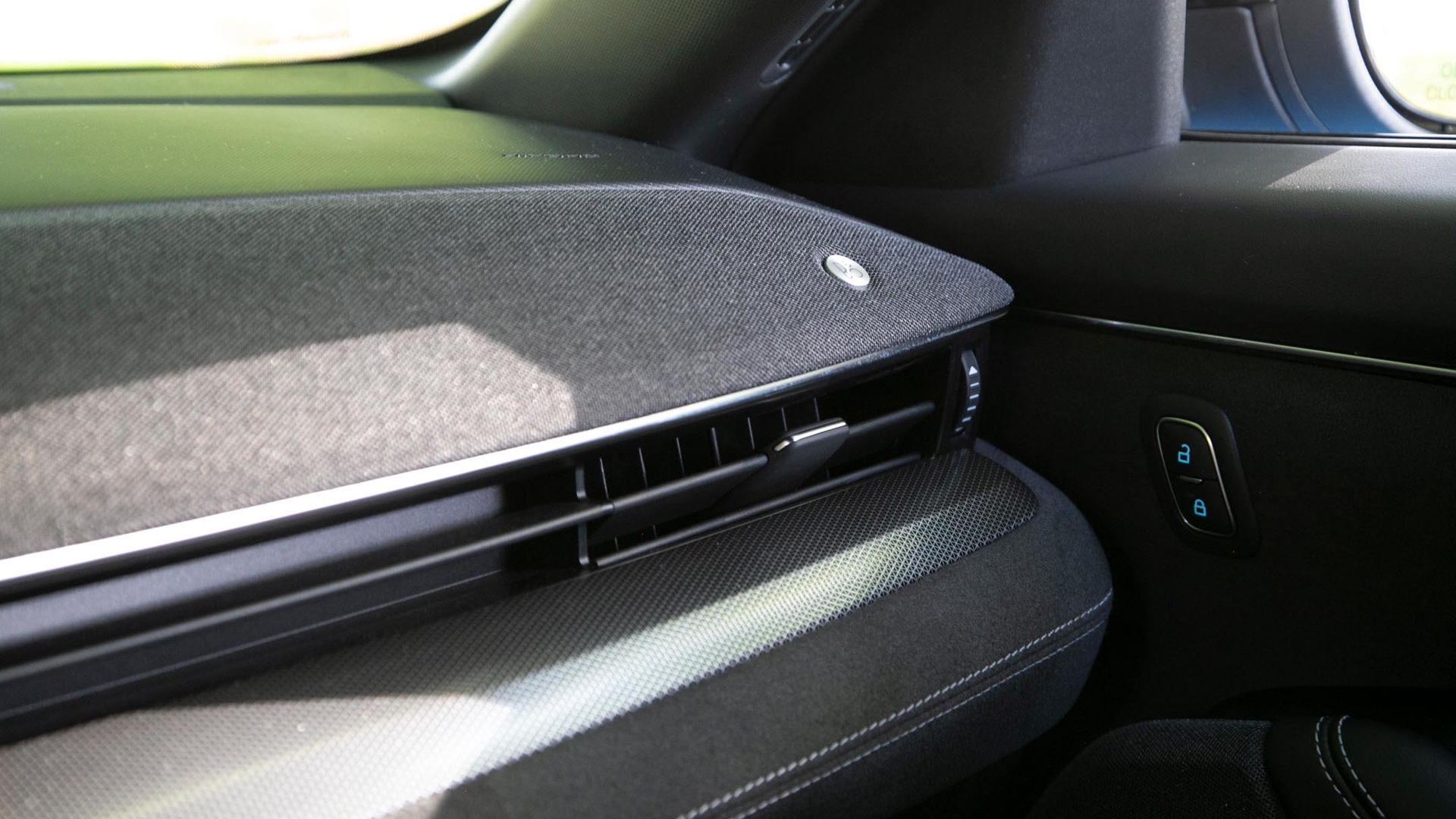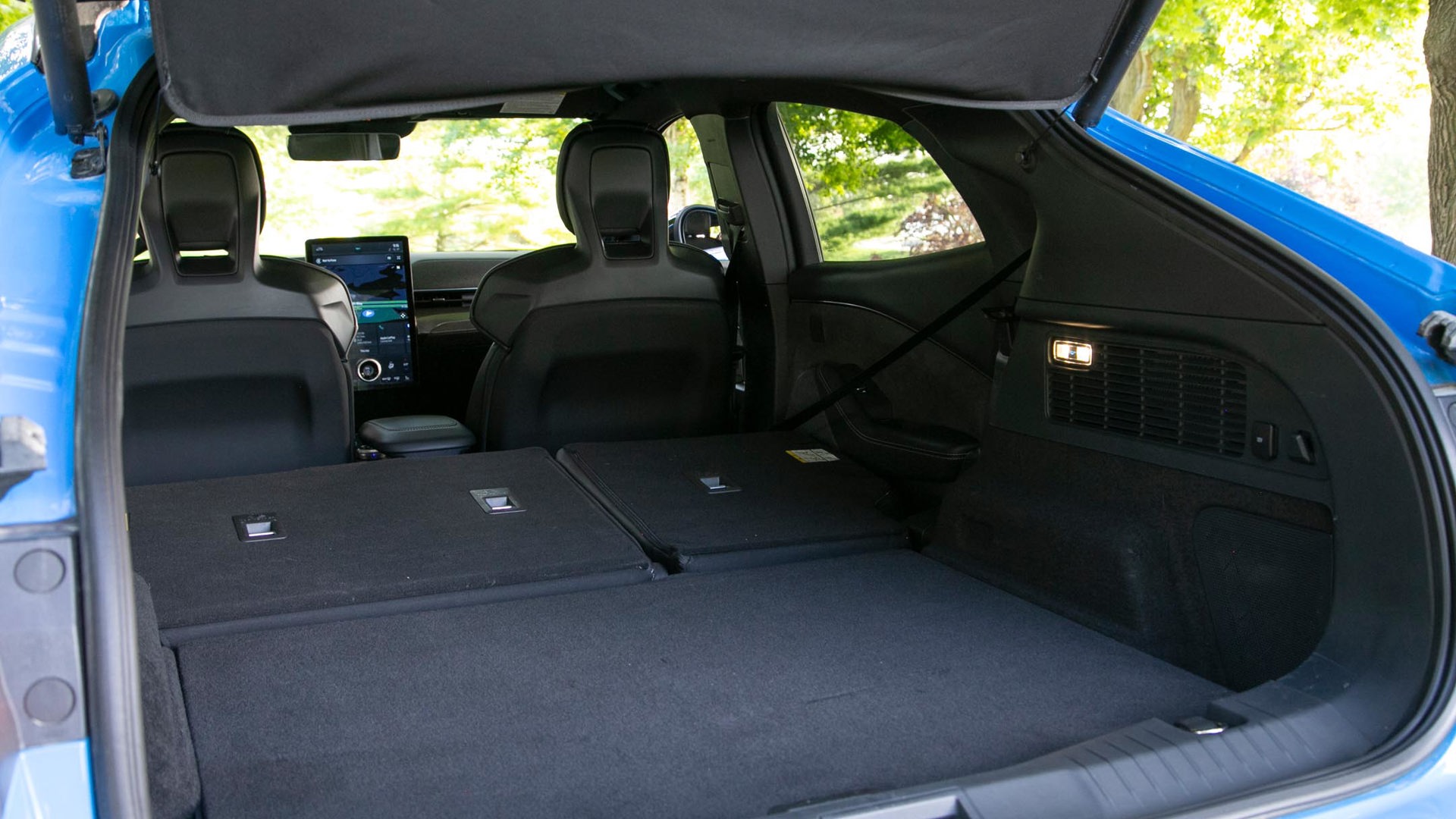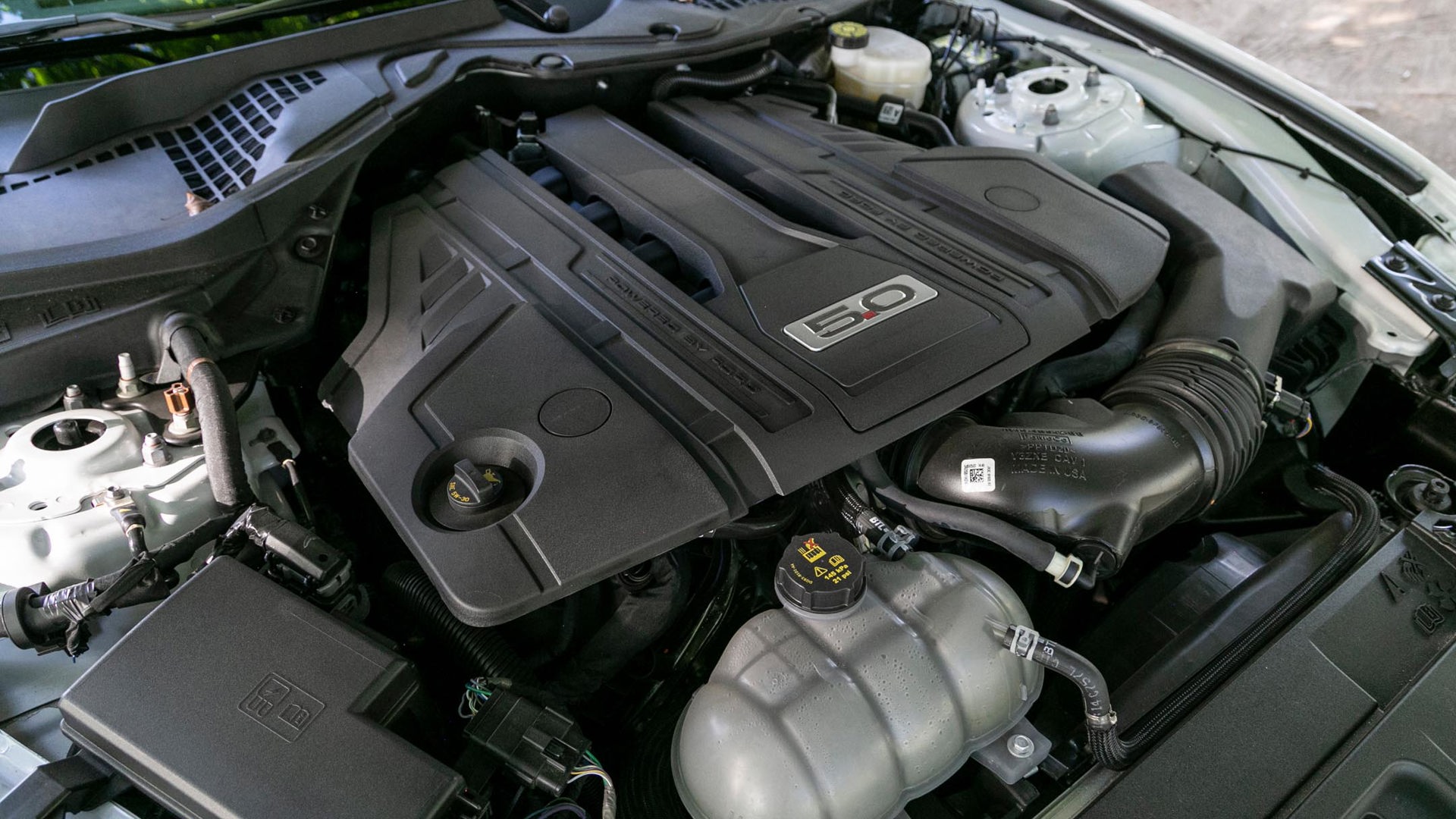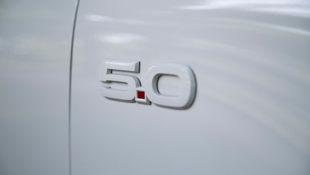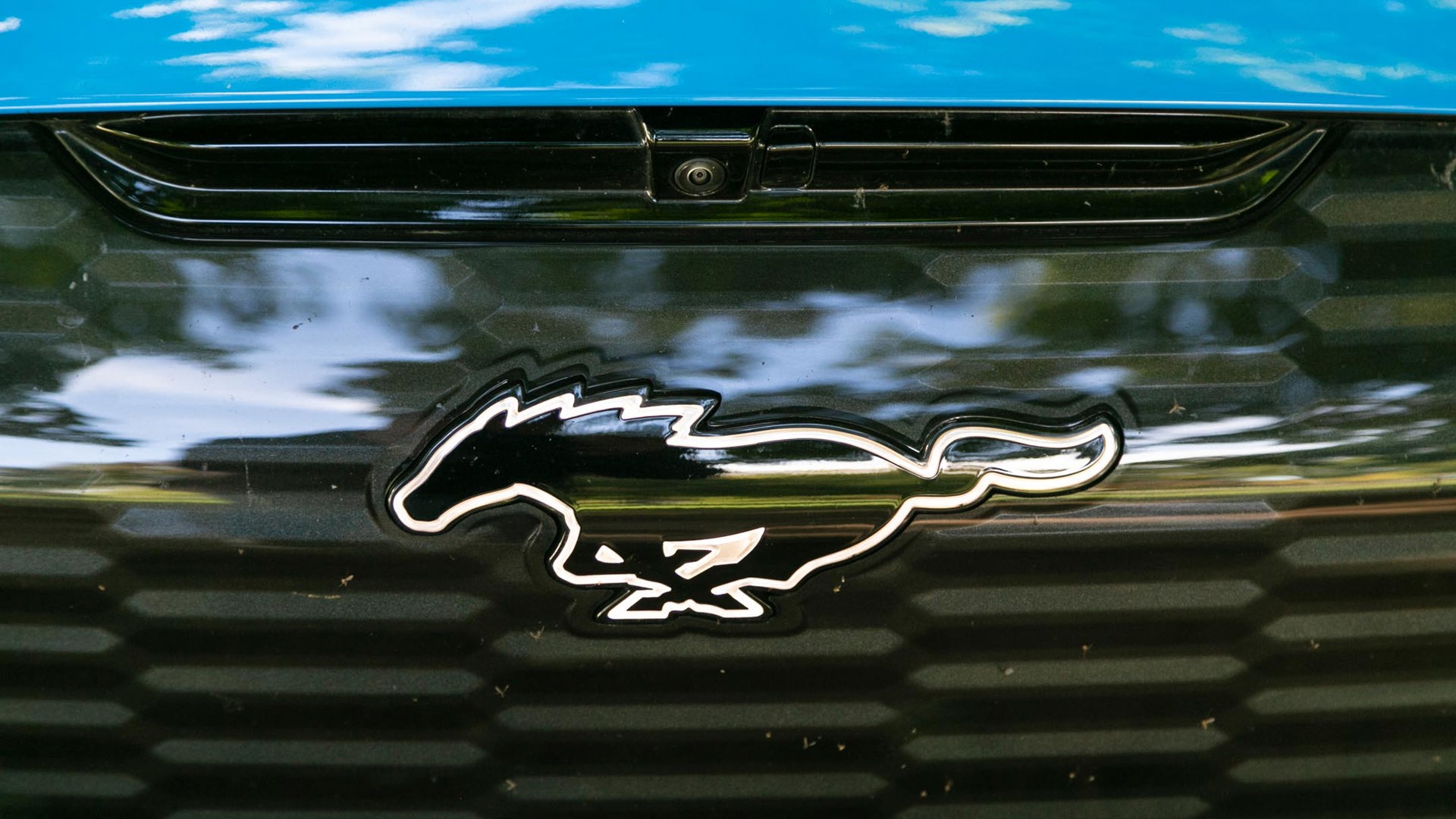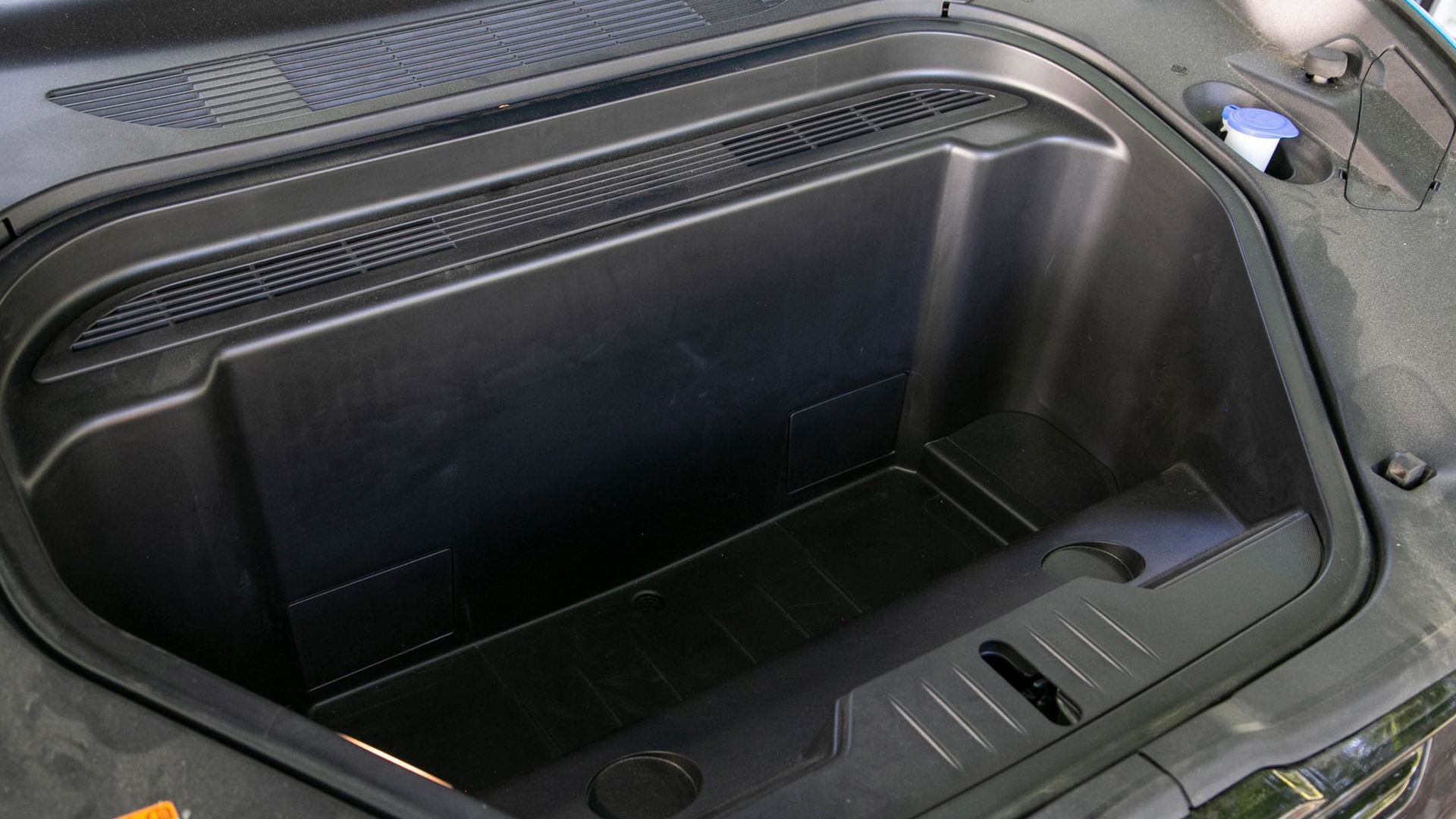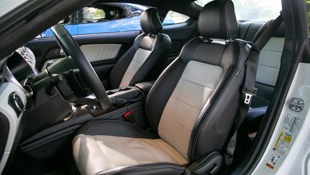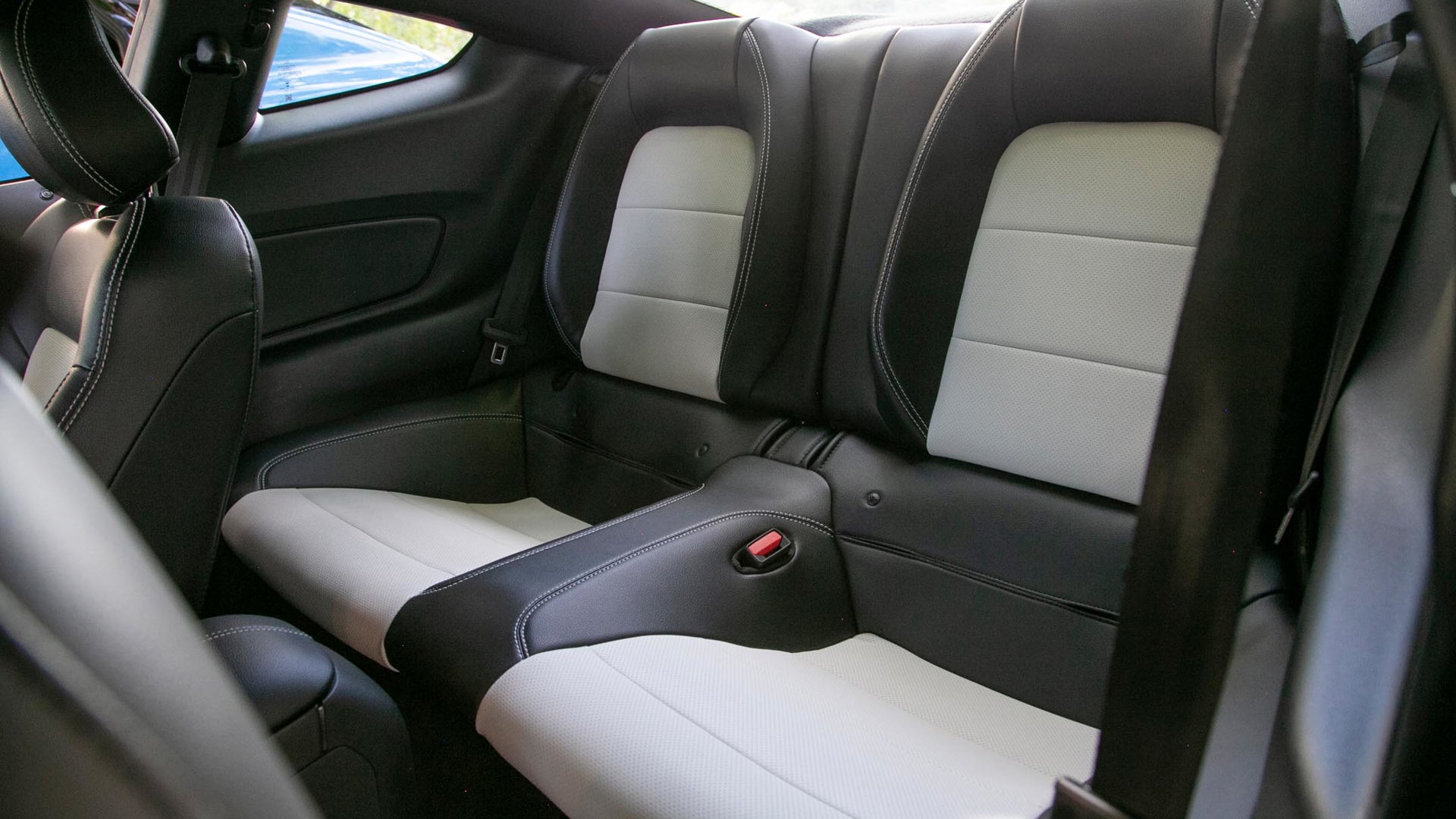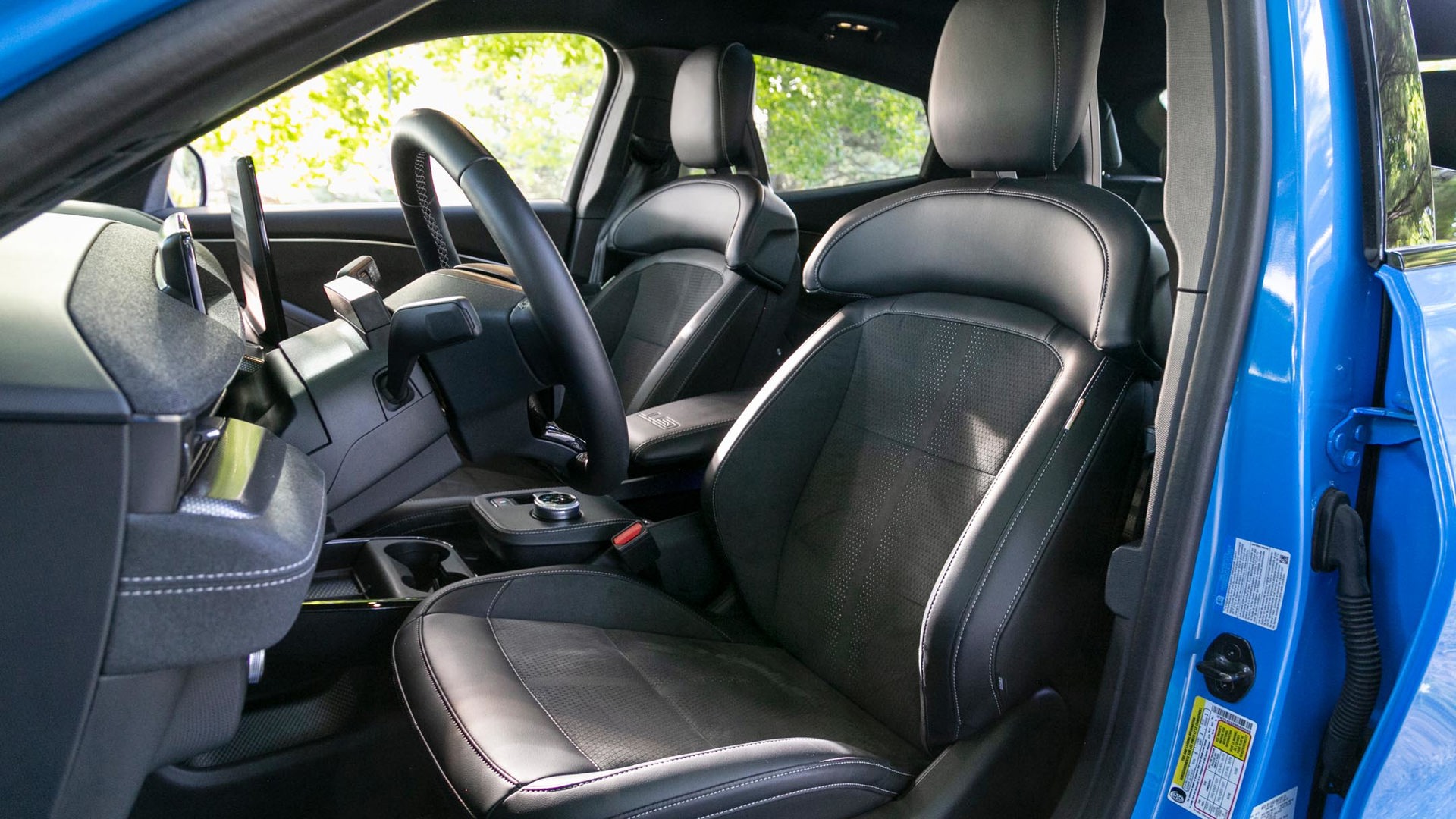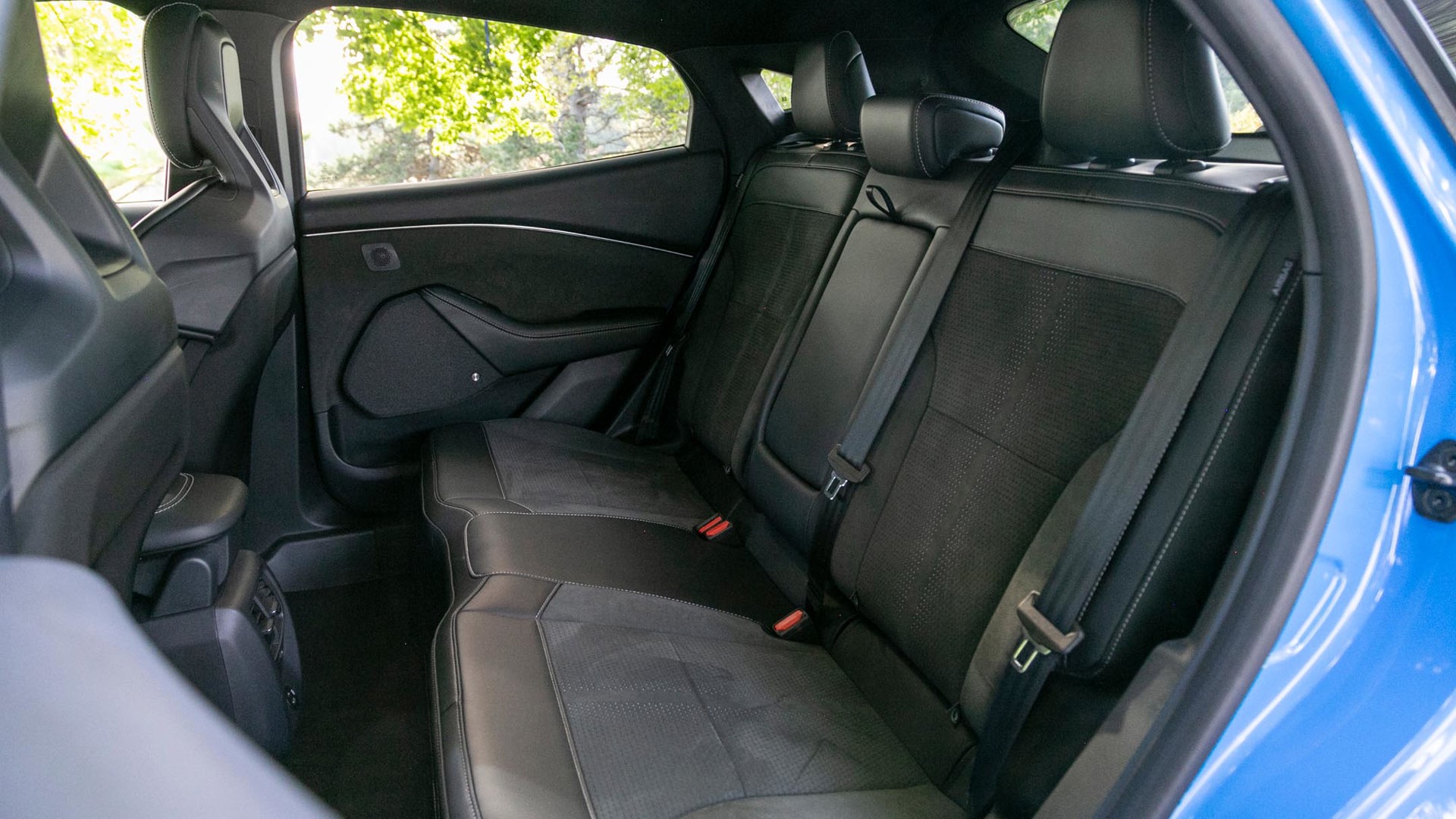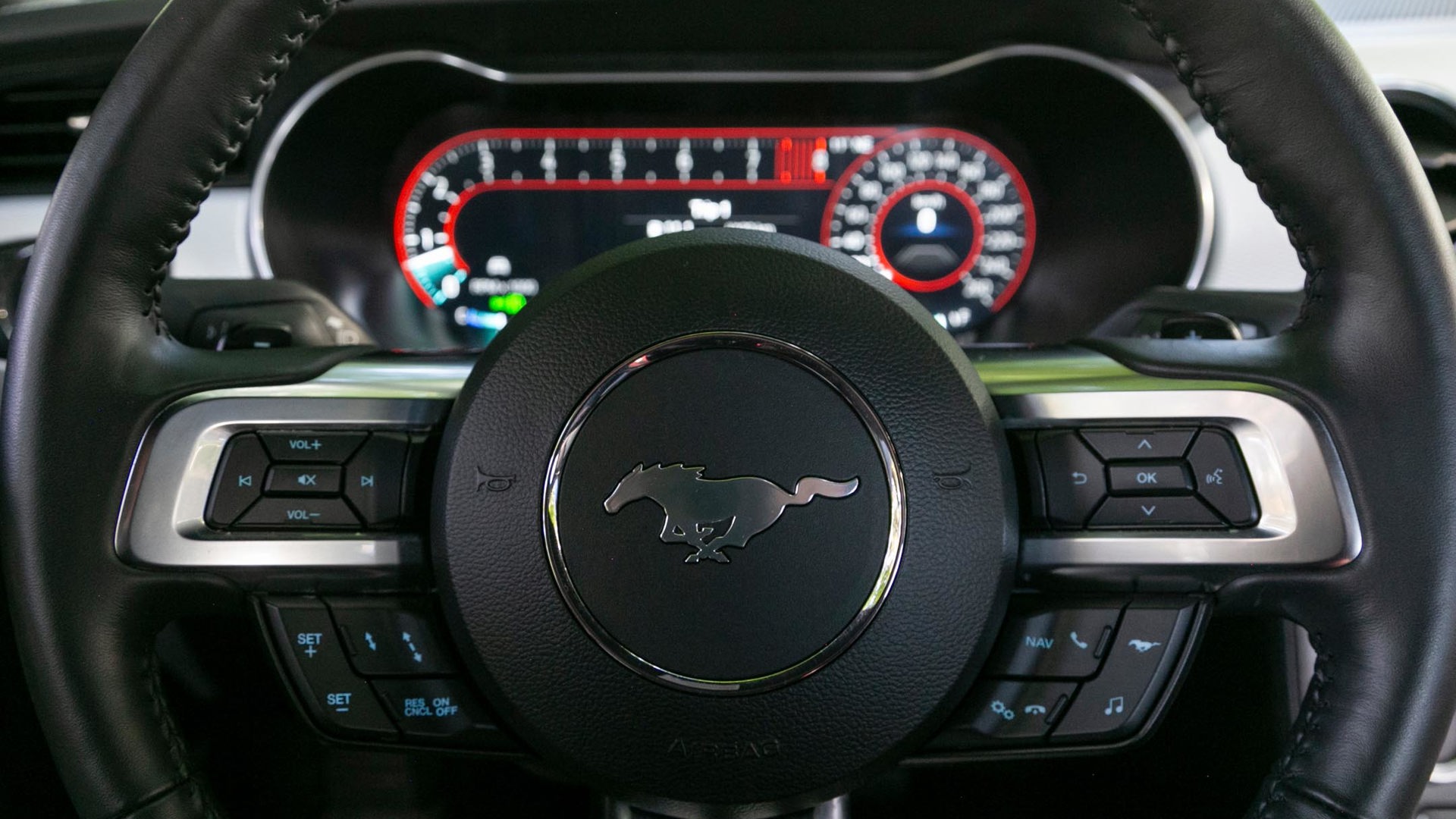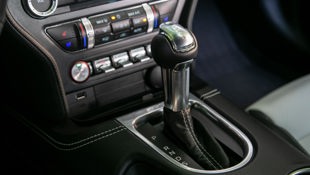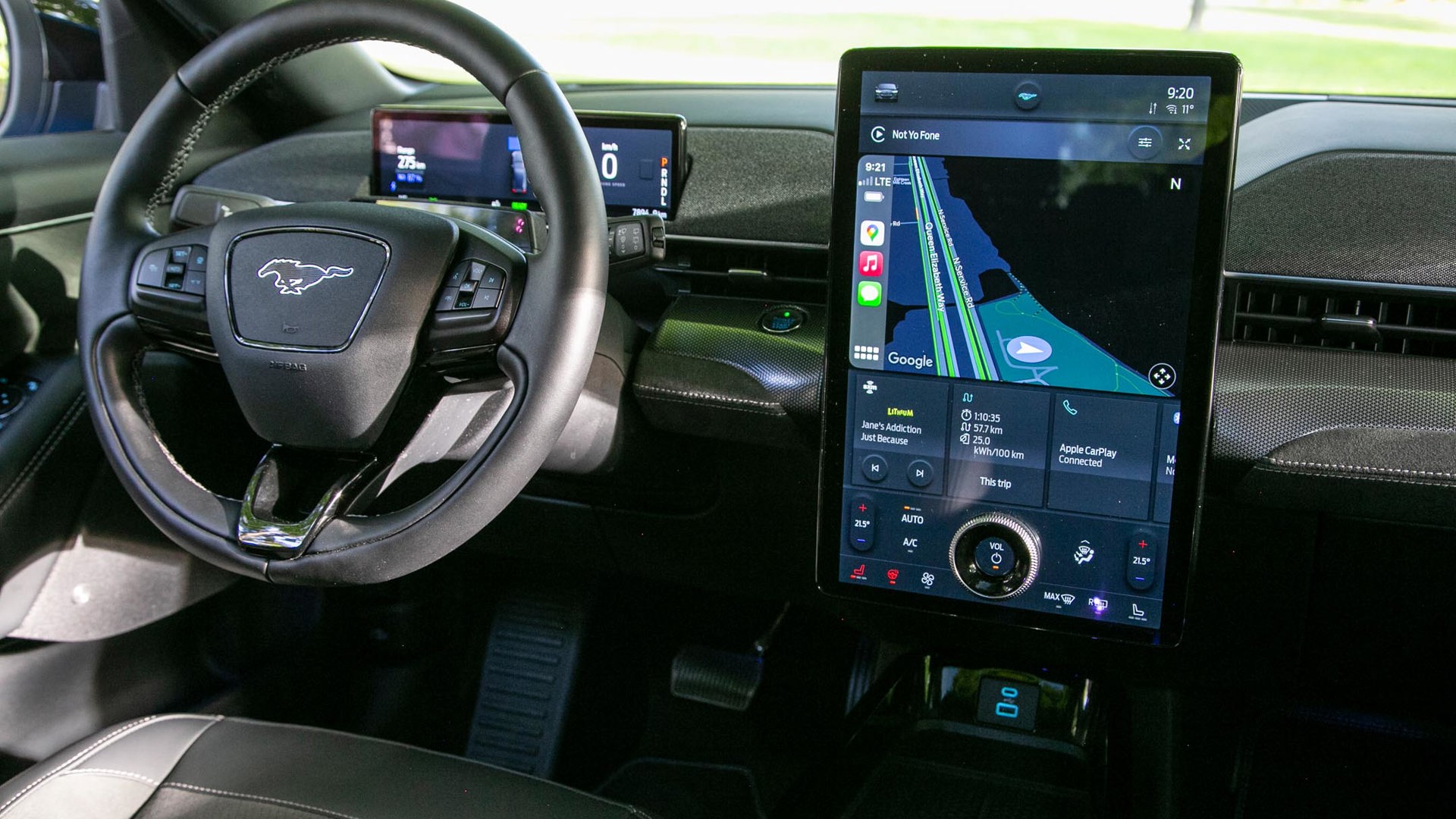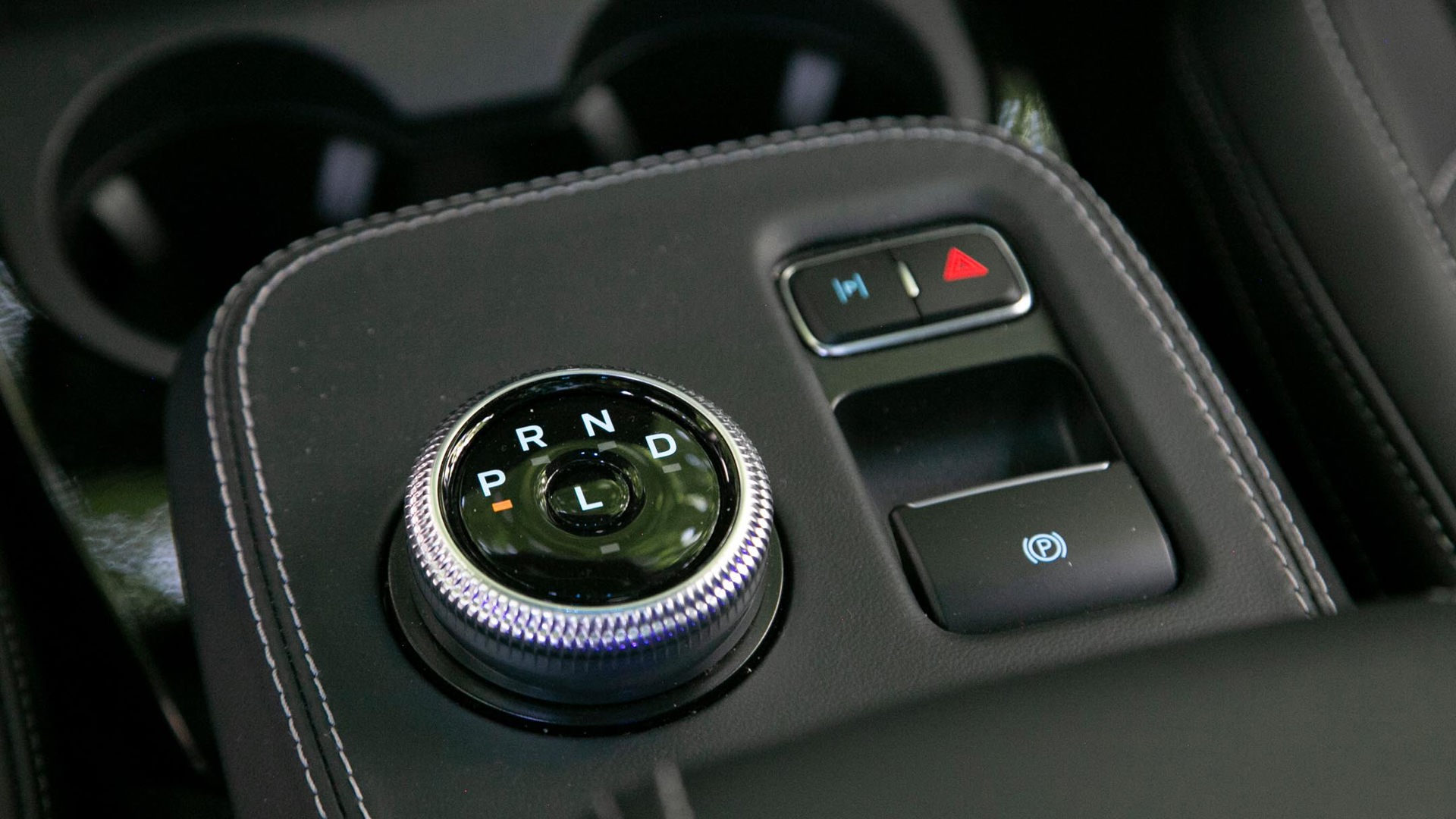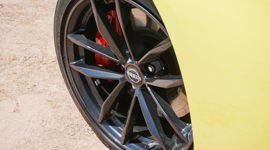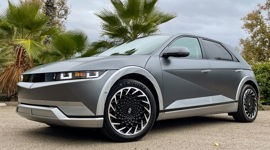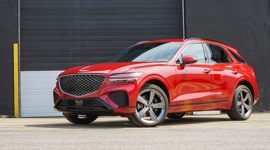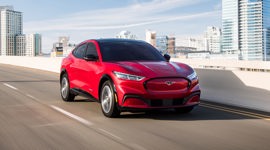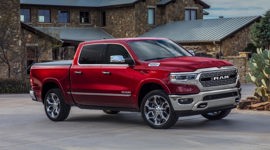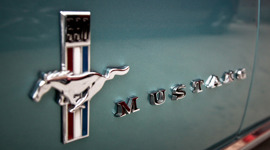Look, we didn’t want to have to do this comparison, but here we are. Blame Ford, they’re the ones who took the coveted galloping horse badge and put it on the nose of their new five-door crossover electric SUV, causing the Mustang faithful to call it nothing short of heresy. If Ford’s marketing folks were solely after as much attention as possible for their first mainstream EV offering, well, they got it. There’s no such thing as bad publicity, right?
Even still, it seems to make as much sense as introducing mini cheese wheels and marketing them under the Oreo brand. Confusion and concern are bound to ensue.
Realistically, nobody walking into a dealership intent on burbling away in a new V8-powered Mustang GT is going to be persuaded to buy a Mustang Mach-E Performance GT any more than a shopper keen on saving the planet with an EV is going to opt for the gas-thirsty pony car instead. But in the interest of open-mindedness, I’ve driven these two back to back, to try and make some sense of it all and see if they’re both worthy of their GT medallions.
Performance
The GT badge has, for decades, been applied to Mustangs with a V8 under hood. In recent years, various Shelby, Mach-1, and Bullitt variants have knocked the Mustang GT to middle of the model line status, but when optioned with the Performance Package, a stick shift and the eletro-magnetic suspension, it’s still an extremely impressive driver’s car. Alas, our Mustang GT tester was not equipped with any of that, instead being spec’ed as a flashy touring car rather than an overt sports machine.
As a result, the driving experience of the white coupe is not as exciting as one might hope for the classic pony car. The beloved 5.0-litre “Coyote” V8 remains every bit as characterful with its free-revving nature and addictively ferocious exhaust note, but this is supposed to be the old-school beast that makes us want to engage with it as if it were a wild, living thing. Sadly, it falls a bit short on that front, in no small part because of battles with the 10-speed automatic that is hellbent on being in the tallest gear possible at all times. Or for its sluggish gear changes when using the paddle shifters, often resulting in a reaction a split-second later than needed. The 10-speed Mustang may be quicker than its stick shift counterpart, but it’s nowhere near as enjoyable. Worse still, even with 450 horsepower, the Mustang GT feels quick, but its normally aspirated power delivery just isn’t as thrilling as we’ve grown accustomed these days with smaller, turbocharged mills, and, dare I say it, EVs.
Yawning about a V8-powered sports coupe that’ll roar to 100 km/h in four seconds flat seems ridiculous, yet compared to the Mach-E GT’s thrust, it’s justified. There’s a separate electric motor powering each the front and rear wheels, and combined they dish up 480 horsepower, which is more than the V8. But, the Mach-E GT weighs a grotesque 550 kg (1,212 lb) more than the Mustang coupe, so that power figure is largely moot. Instead, the Mach-E’s 634 lb-ft of torque is what really matters here, surpassing even the top-dog Shelby 500’s 625 lb-ft. The result is a zero-to-100-km/h time that’s marginally better than the Mustang GT’s, at least on paper, but feels dizzyingly quick thanks to the sheer immediacy of throttle inputs. That it all happens in near silence adds to the surrealism of the experience. As long as you don’t mind the rapid depletion of range, thrilling passengers with effortless, vertigo-inducing acceleration can be a great party trick with the electric GT.
With all-wheel traction, the Mach-E is simple to drive, even very swiftly. And while Mustangs have earned infamy for leaving Cars and Coffee events with much noise and smoky burnouts (all-too-often resulting in a crash, as YouTube has shown us), the electric GT offers no such amusement to spectators, making a stealthy, yet speedy exit. The all-wheel drive and grippy Pirelli summer tires also help the Mach-E cling to the pavement when cornering hard, and thanks to its adaptive suspension and low centre of gravity, the Mach-E GT corners flat, too.
The electric pony might provide scintillating straight-line thrust and impressive cornering, but its taller seating position and heavily boosted electric steering makes the experience less interactive than in the GT coupe. Despite its all-season tires, the coupe’s turn-in and steering responsiveness, plus road feel communication is greater than the Mach-E’s. The coupe’s brakes, too, offer a more linear response than the strong but abrupt braking of the Mach-E. A true sports car should be about far more than performance numbers on a page, and the Mustang GT – even optioned for touring – involves its pilot in the act of driving more than the Mach-E does.
Living with the Different GTs
Purchasing a Mustang GT has always been an emotional exercise founded in an owner’s passion for the pony car and love of performance, or at least the image of performance. Ford has done a great job of keeping the Mustang GT’s cachet steeped in racing history, maintaining a lot of key styling aspects that have ensured lovers of a ’64 Mustang should still be drawn to the newest version. The long hood, short back, and low roof all contribute to the Mustang’s visual appeal, and even in this Ice Ice Baby version with its white wheels, it’s an aggressive, well-proportioned sports coupe.
The Performance GT is the best looking of the Mach-E family with its big wheels and the large, smooth nose at least made to resemble a grille, but it’s still distinctly a crossover SUV, like the sort of vehicle seen everywhere taking the kids to hockey practice. It’s also a bit blobby and tall, preventing it from having the sort of lust-factor that the traditional Mustang coupes and convertibles offer.
Of course, that body style also makes it a far more practical machine with a usable back seat that’s easily accessed via rear doors, and a cargo hold under the hatchback that can swallow three times the volume of cargo as the coupe. And that’s before we get to the front trunk (frunk). Plus, with a set of winter tires, it will make it a far better choice for nasty weather than the rear-drive Mustang GT coupe.
Once nestled behind the wheel, both GTs offer comfortable seats and while the Mach-E’s elevated driving position presents better sight lines to the front, the raked roof line limits rear and rear three-quarter visibility almost as much as in the coupe. Being the much newer design, the Mach-E is fitted with a futuristic cockpit, focused around a massive, vertical touchscreen. The simpler, traditional layout of the Mustang GT not only utilizes more buttons and switches, but surely appeals to a demographic not enamoured by complex multi-step functions activated through glass contact points.
Living with these two also means keeping them running, and while electric cars are proving to be easier and cheaper for maintenance and electricity still costs less than gasoline, there are other factors at play. Owning an electric vehicle requires a Level 2 home charger to maximize their value and efficacy, enabling an owner to leave the house with a full charge every day. The Mach-E GT offers mediocre charge speeds at high-speed stations meaning on a road trip, the coupe, with its quick tank top-ups, will be the easier car to live with. Plus, the Mustang GT’s 61 L gas tank and average combined fuel consumption of 12.8 L/100 km, give it a theoretical range of more than 475 km, while Mach-E GT can’t reach 400 km on a full charge.
Value
At a starting price of just under $50,000, the Mustang GT offers a decent value in terms of the amount of V8 performance offered for the money, but it’s a pretty basic car. Our test unit wore more than $11,000 in options, including its $3,000 Ice White Appearance Package, bringing it up to $63,380 after the $1,995 destination charge is applied.
While the Mach-E lineup starts at a competitive $51,495 (plus some serious government rebates in the Quebec and B.C. markets), the GT Performance Edition begins at a whopping $86,000, and with a few options added to our tester, it came perilously close to six figures, pitting it against EVs from Tesla and BMW.
But hey, that cheap electricity will help narrow the cost gap, right? Over time, perhaps, but using Natural Resources Canada’s calculated annual fuel cost for the Mustang GT of $2,540 versus $768 for the Mach-E, it will take more than 16 years to make up the difference.
Final Thoughts
The Mustang GT is still the more rewarding and character-filled machine, but we’d prefer a performance-focused version with different option packages, and definitely a stick shift.
The Mach-E GT Performance Edition is certainly the easier GT to live with every day and year-round, but it’s also very costly, though admittedly very quick, electric SUV wearing a Mustang costume. It’s compromised as an EV, with limited range, making the slightly cheaper, dual-motor, long-range Mach-E the smarter choice.
So, which one better earns its GT badge? Unsurprisingly, the answer is both and neither. Each machine is compromised as a true grand touring car, but only the Mustang GT coupe can be made into a proper, engaging sports machine suitable for back road engagement or track days. The Mach-E might be wickedly quick and handle well for an EV, but it’s certainly not a sports car.
As consumers, we’re lucky to have both options, and having one of each of these GTs in the garage wouldn’t be a bad situation, but I’m still not going to call the Mach-E a Mustang.

